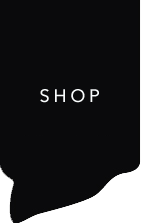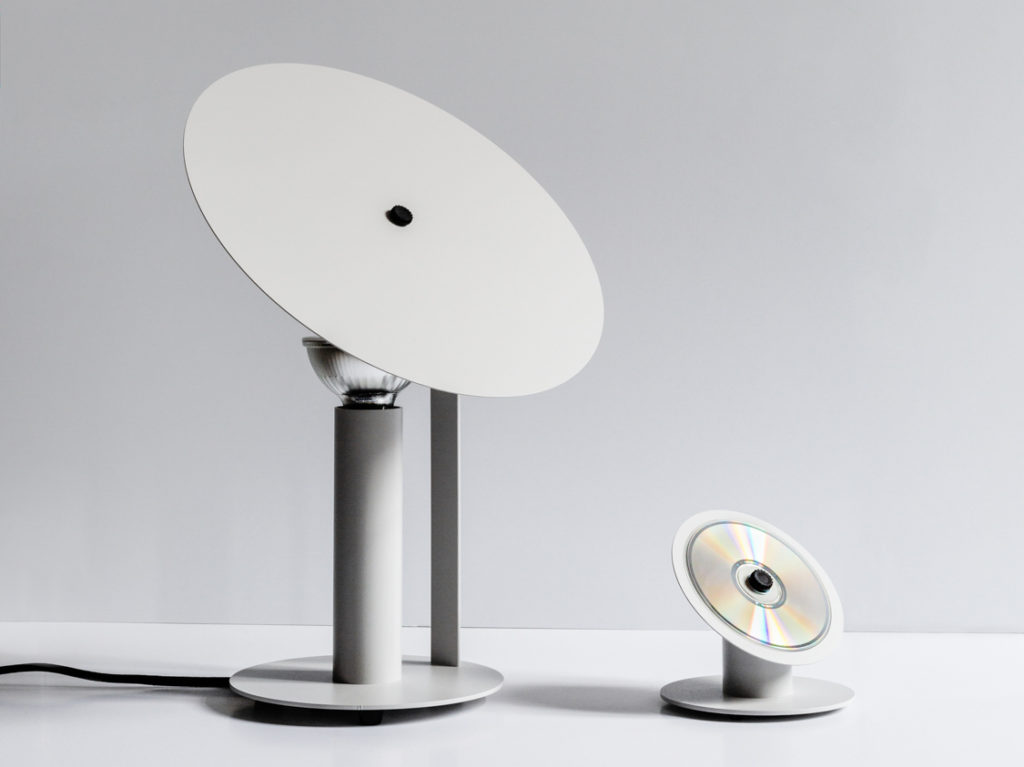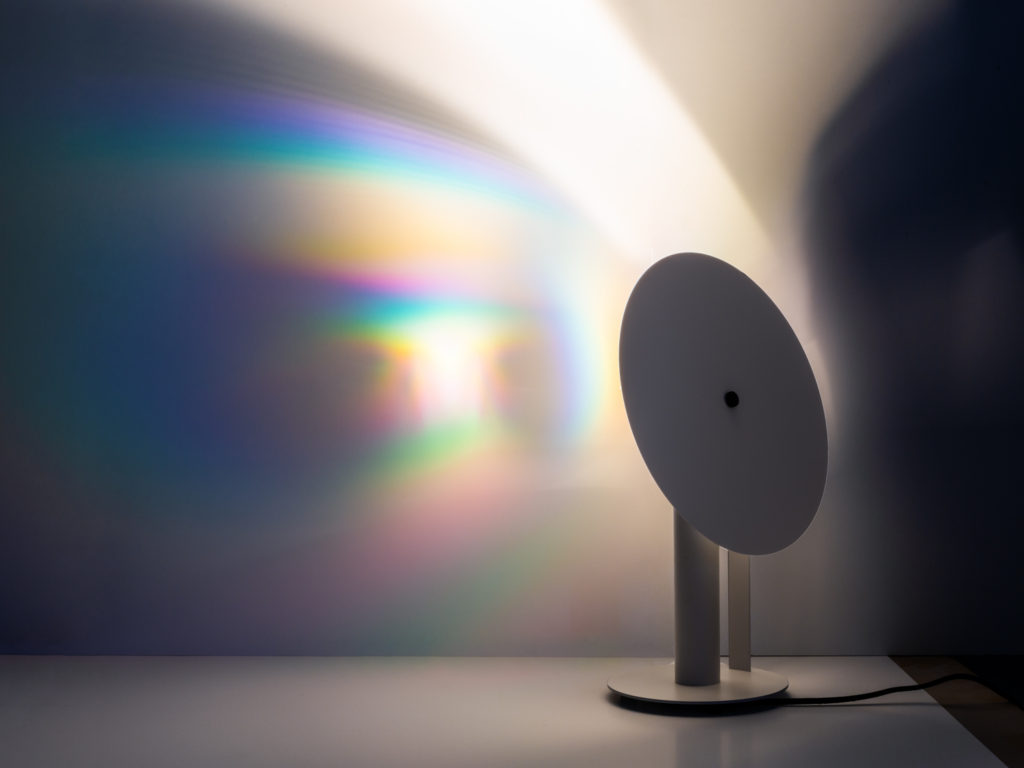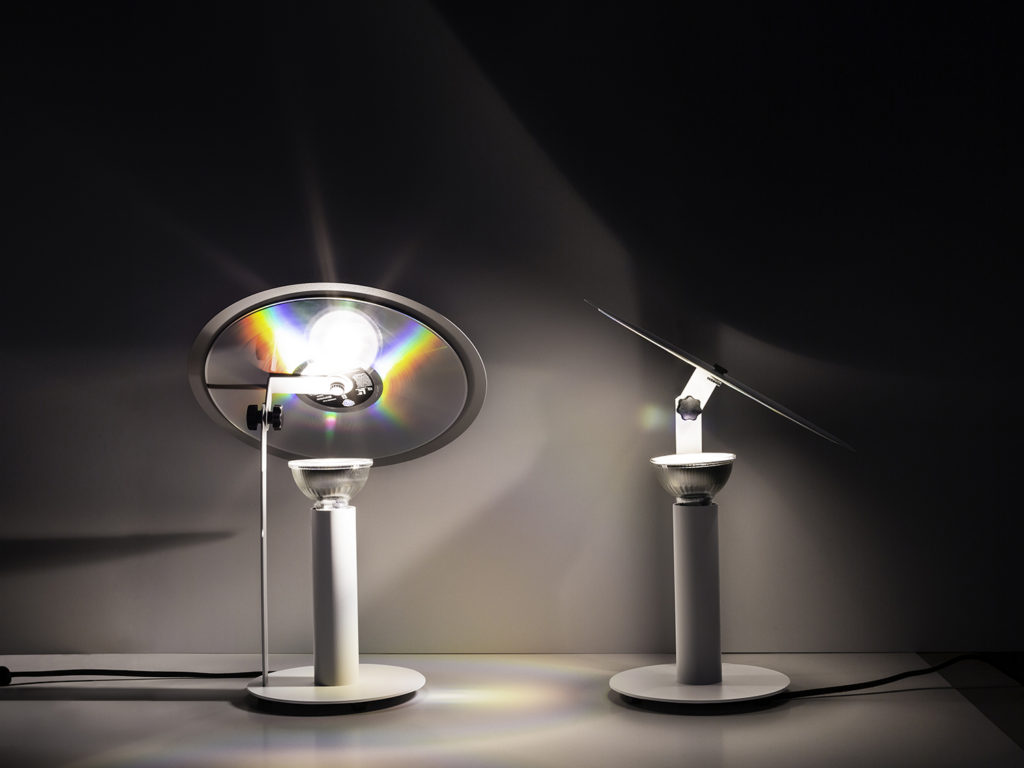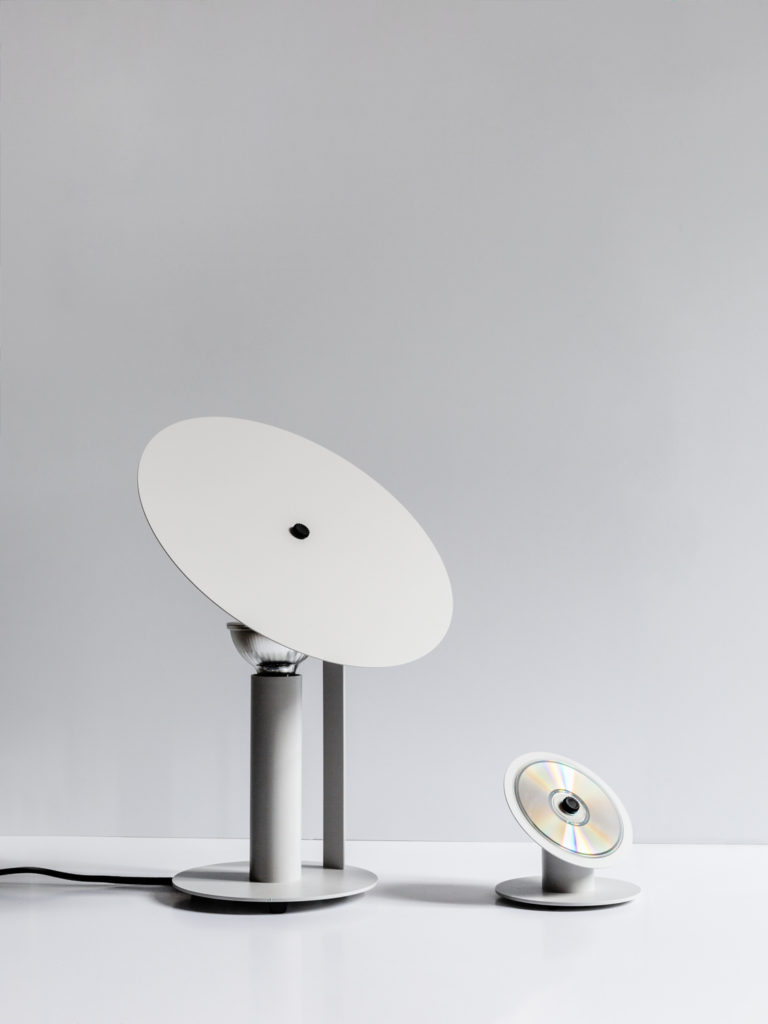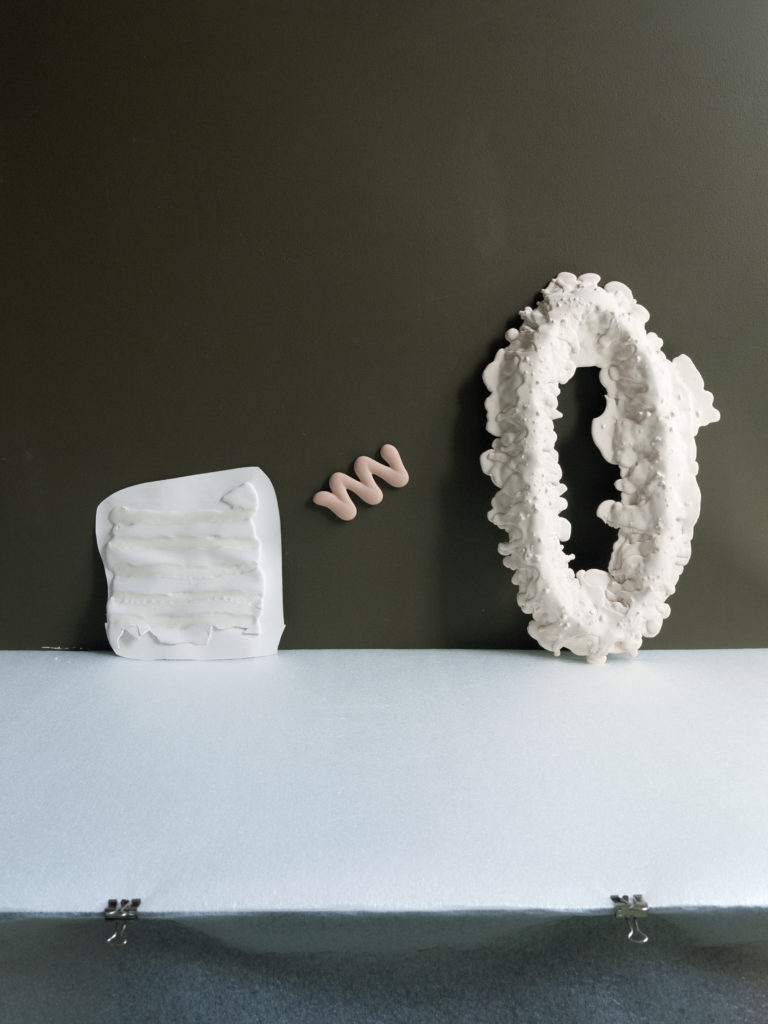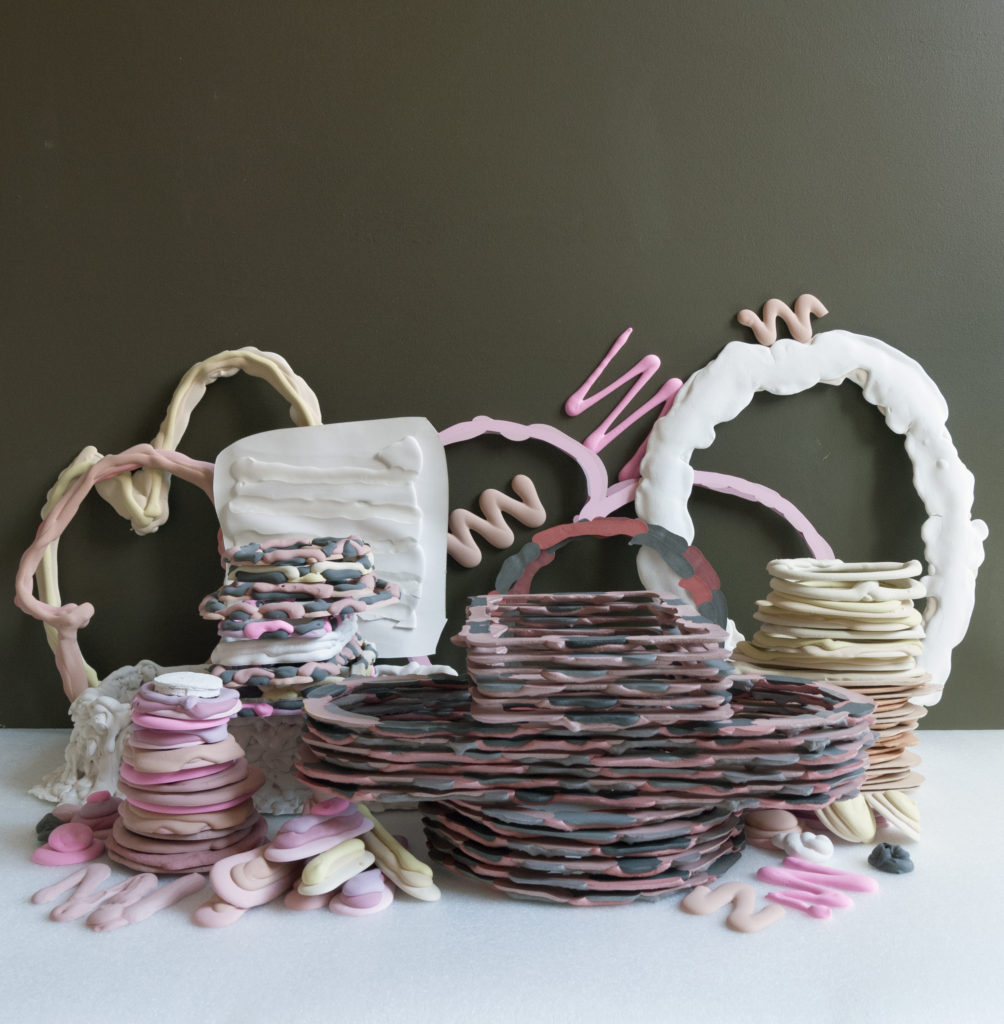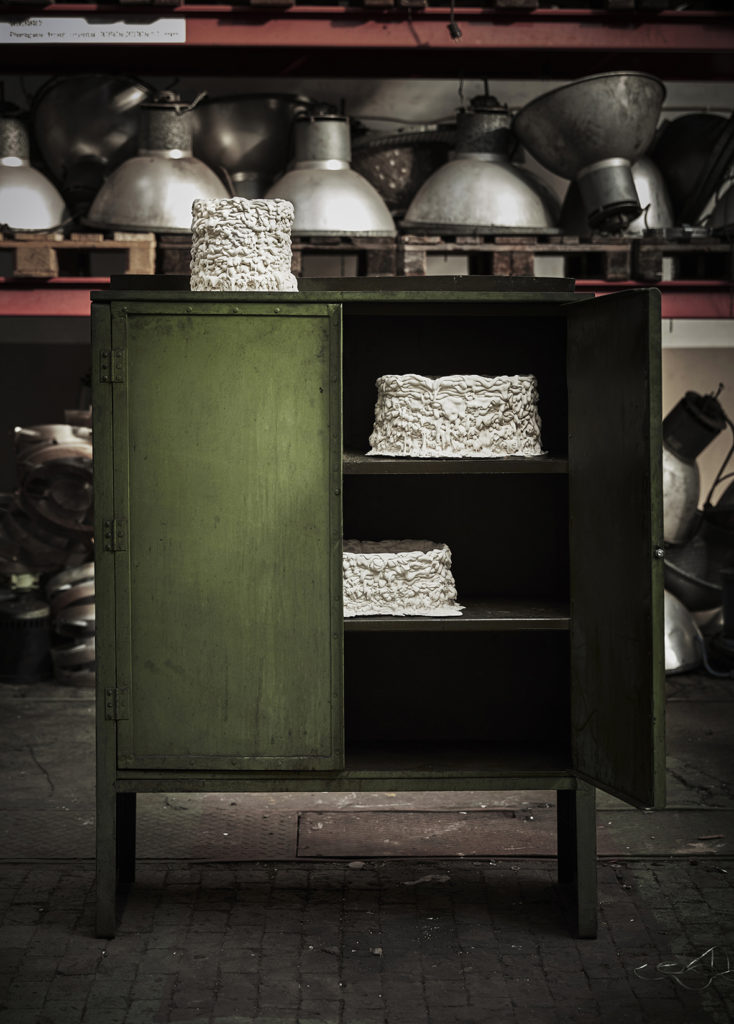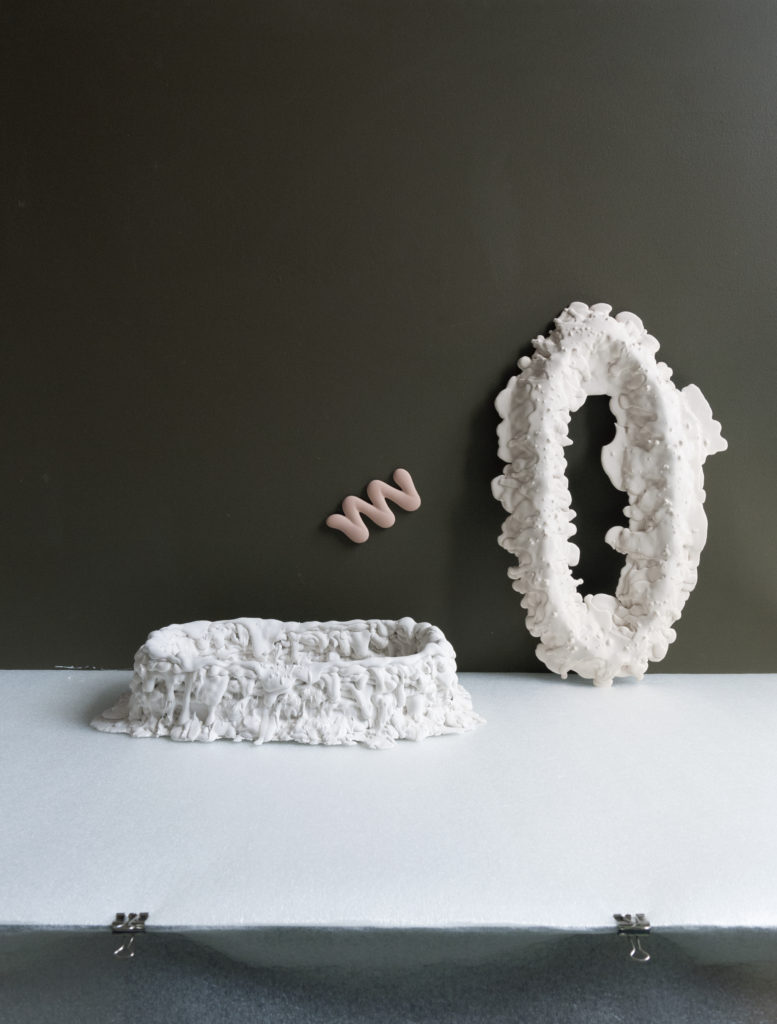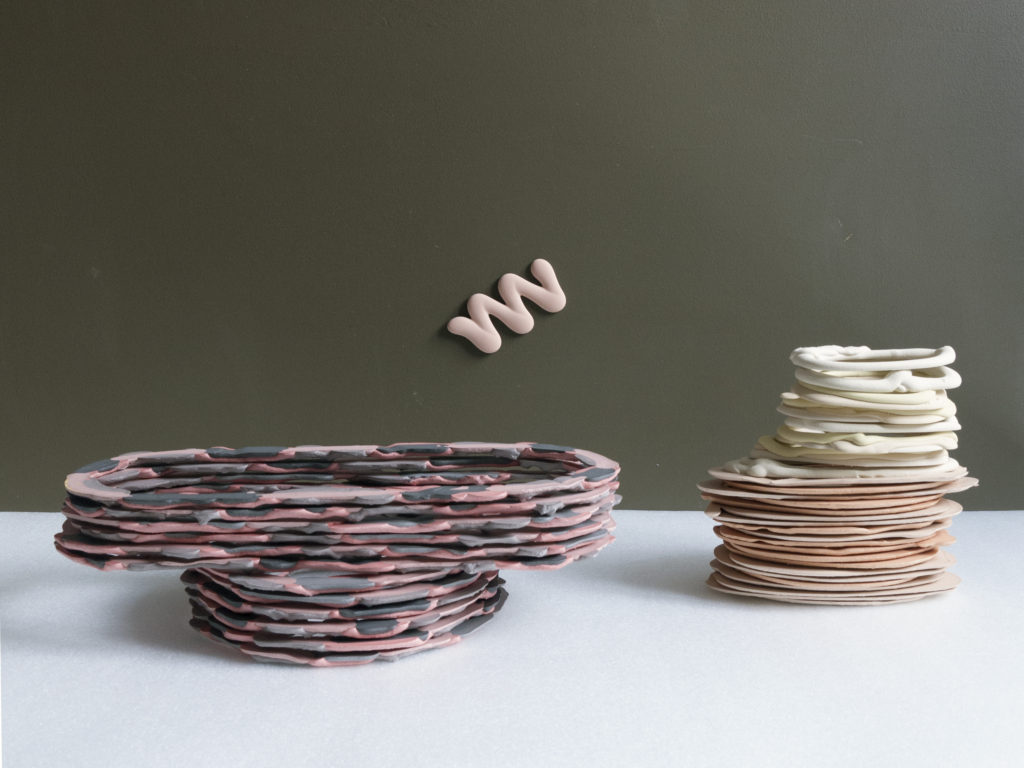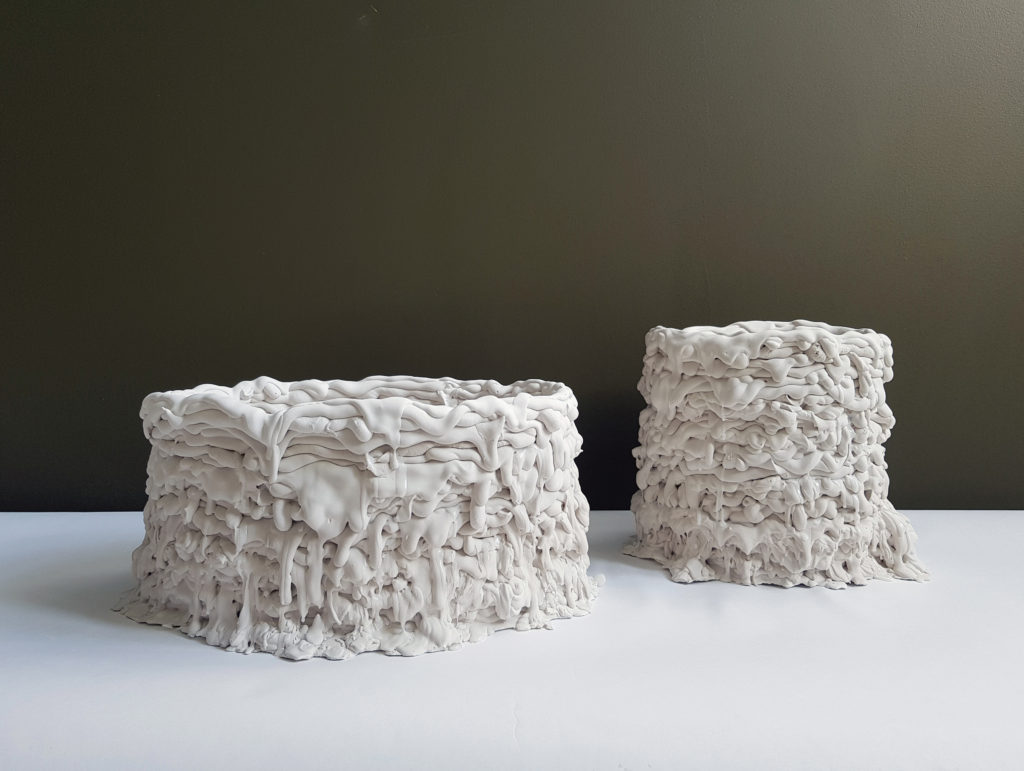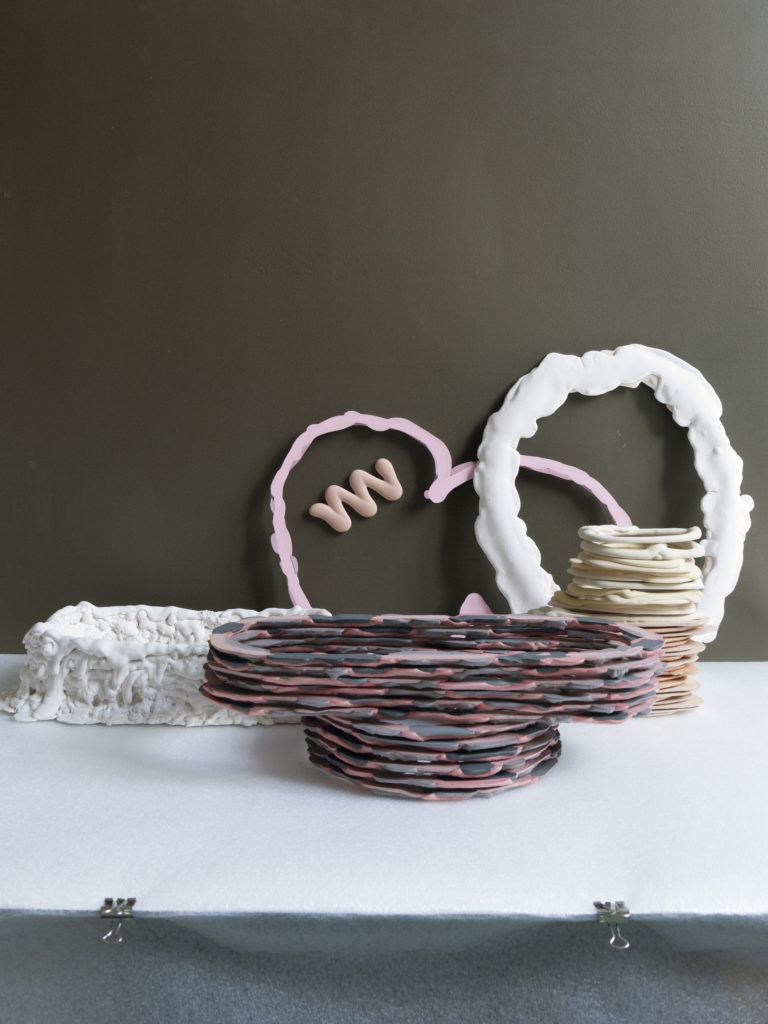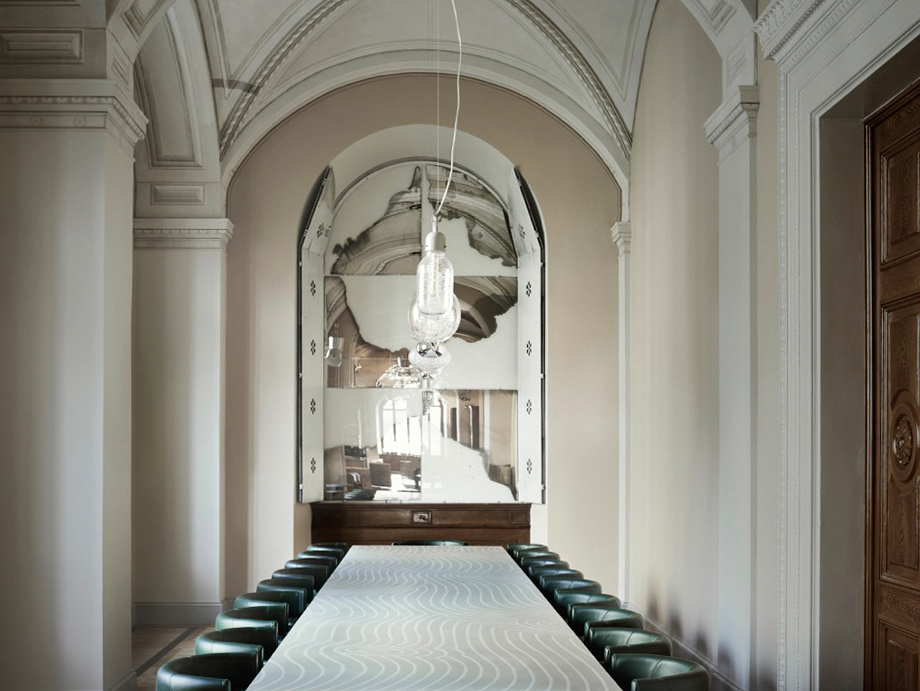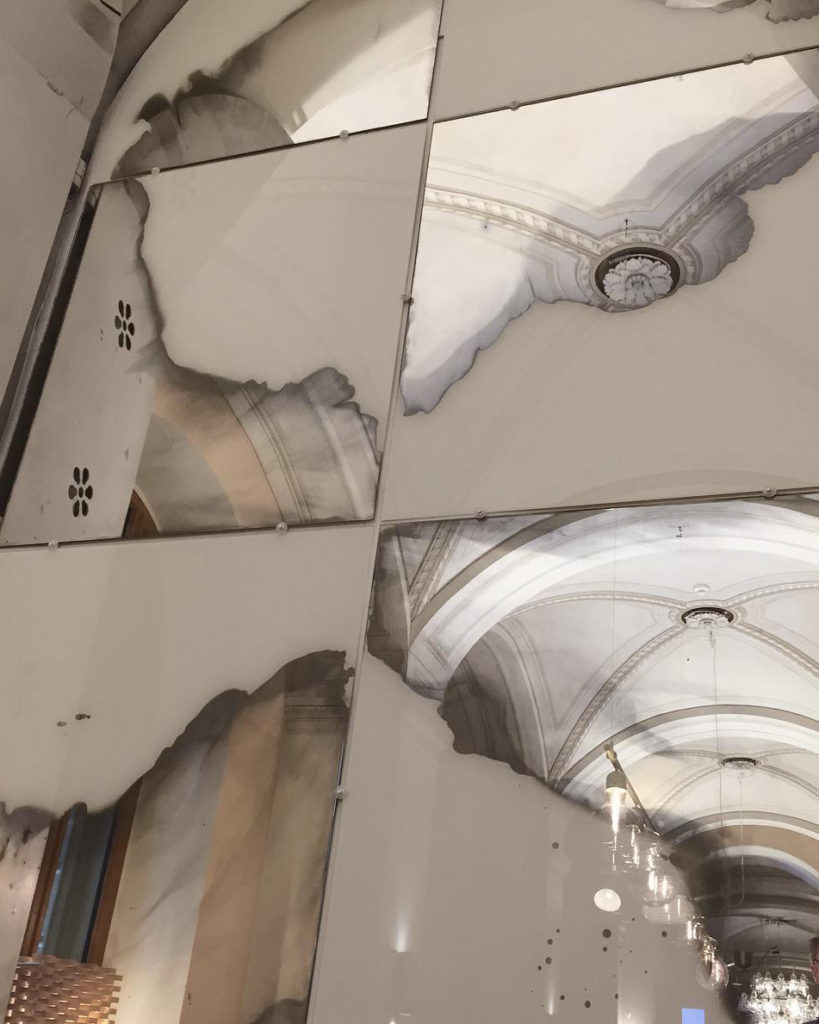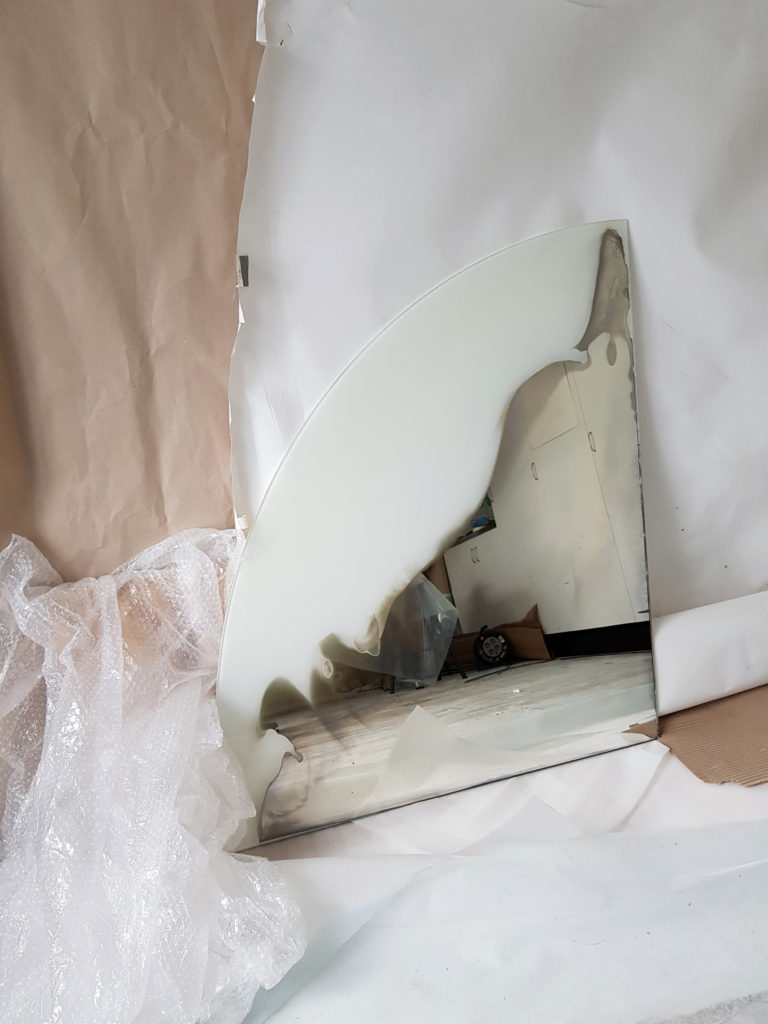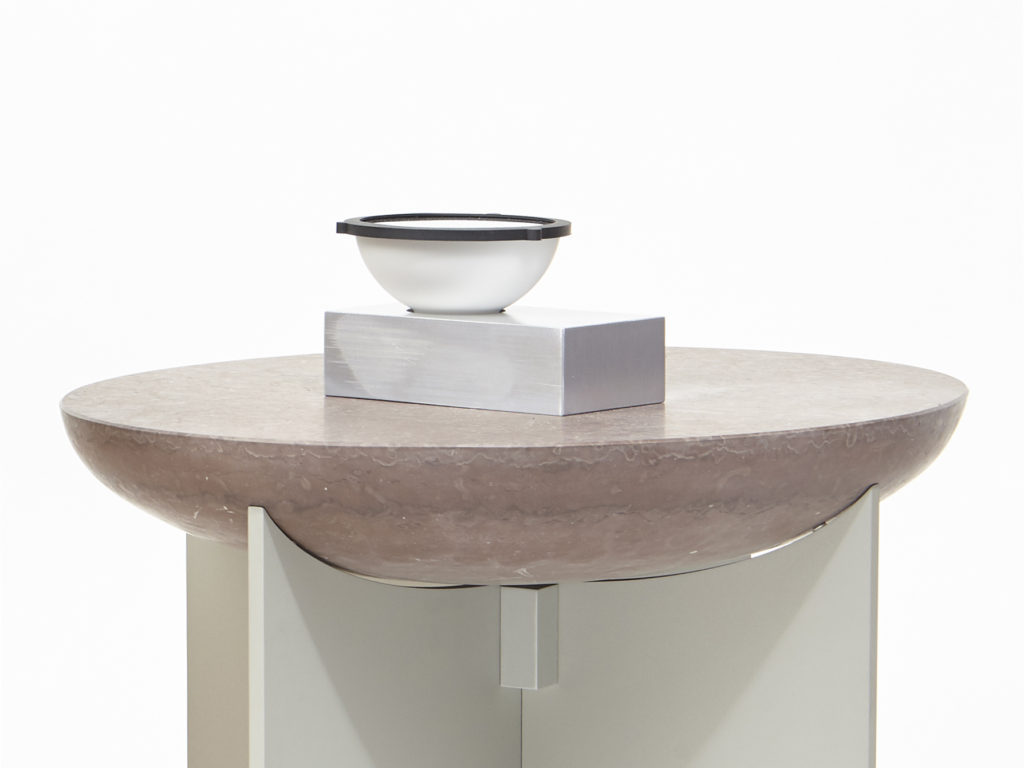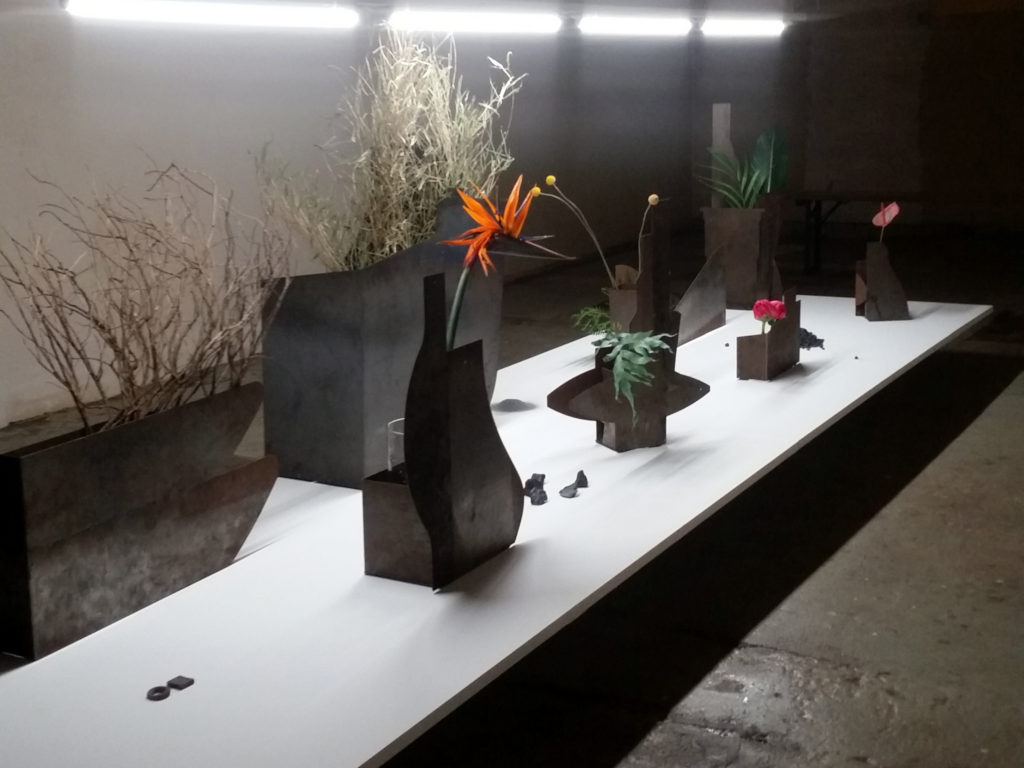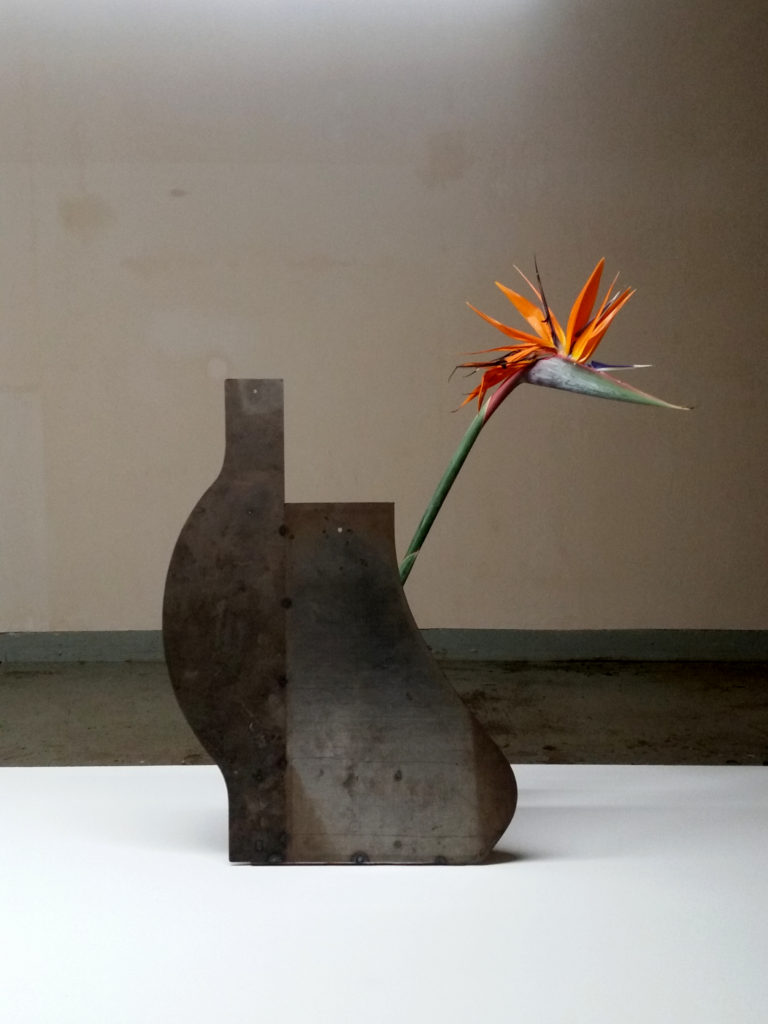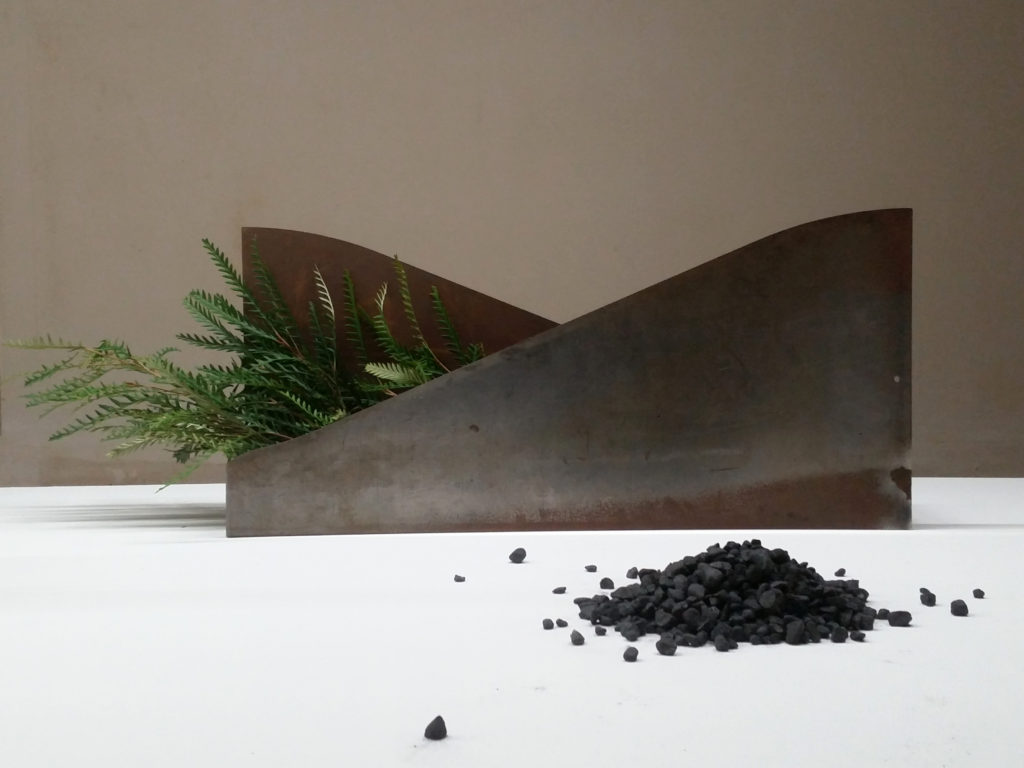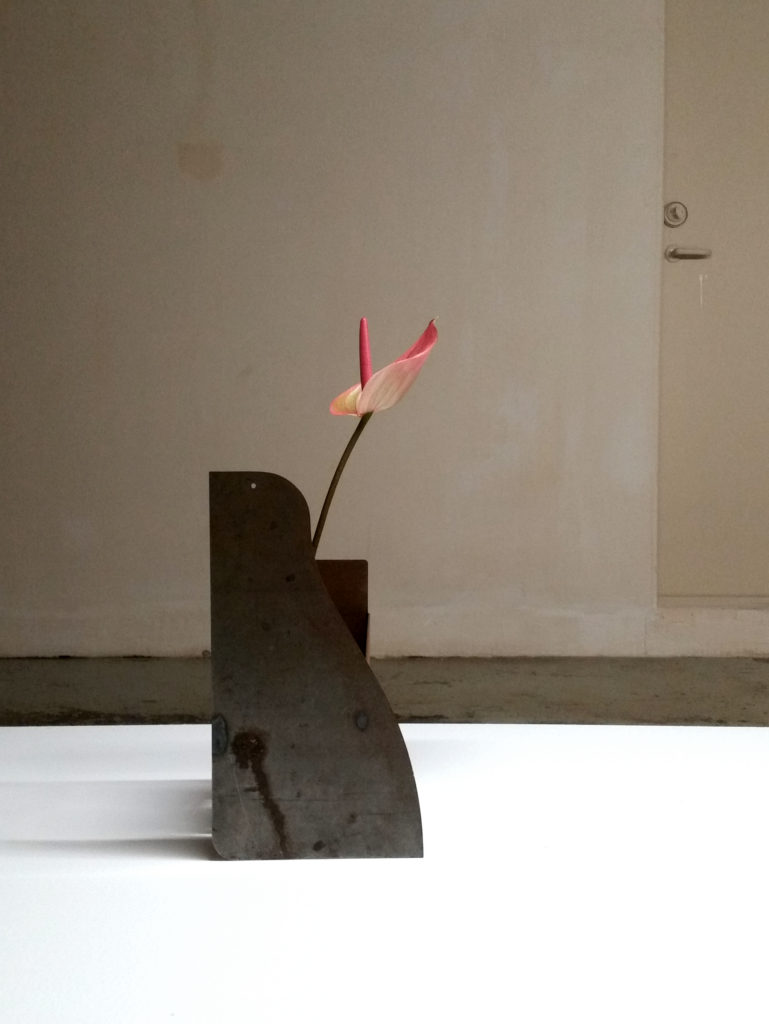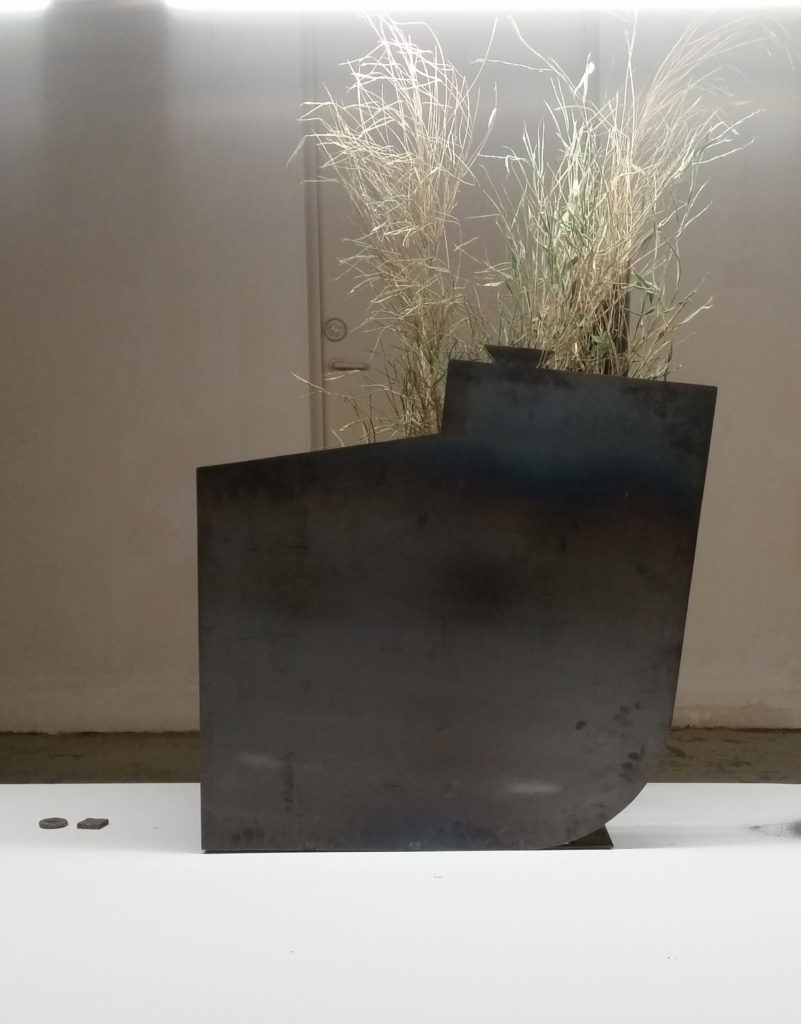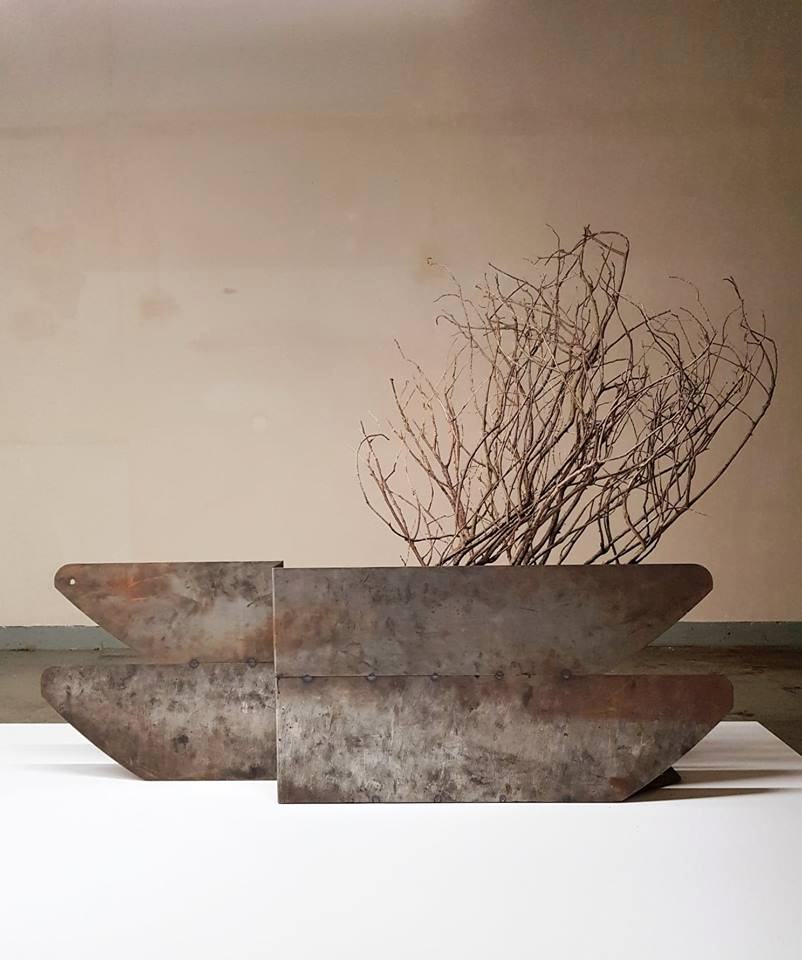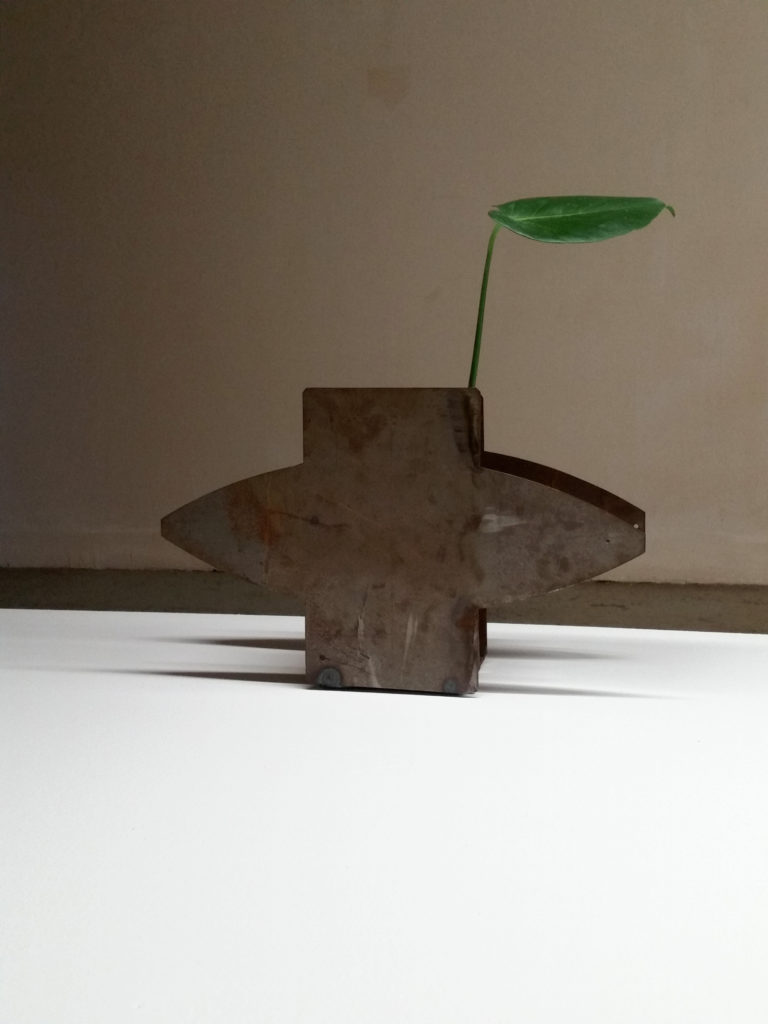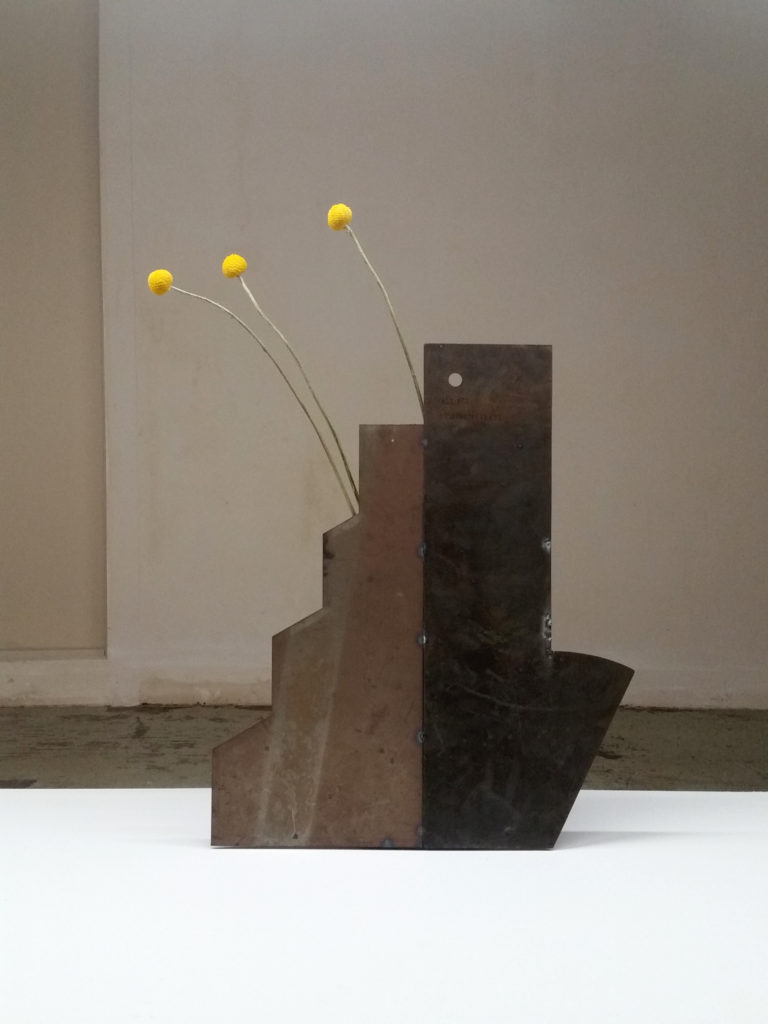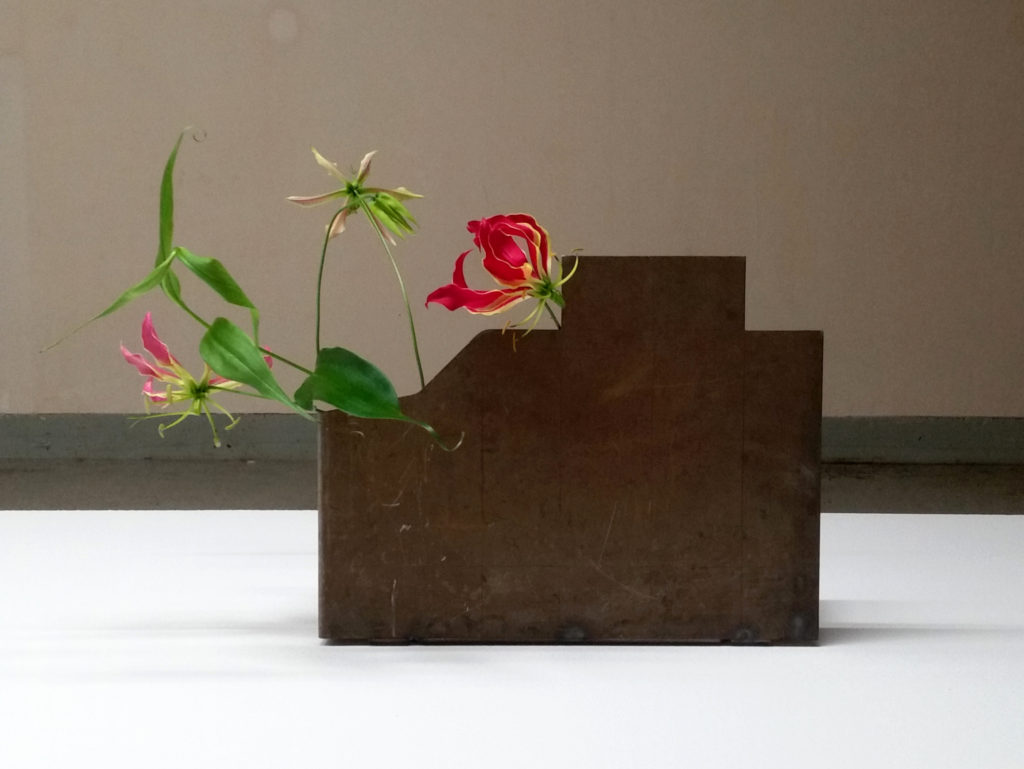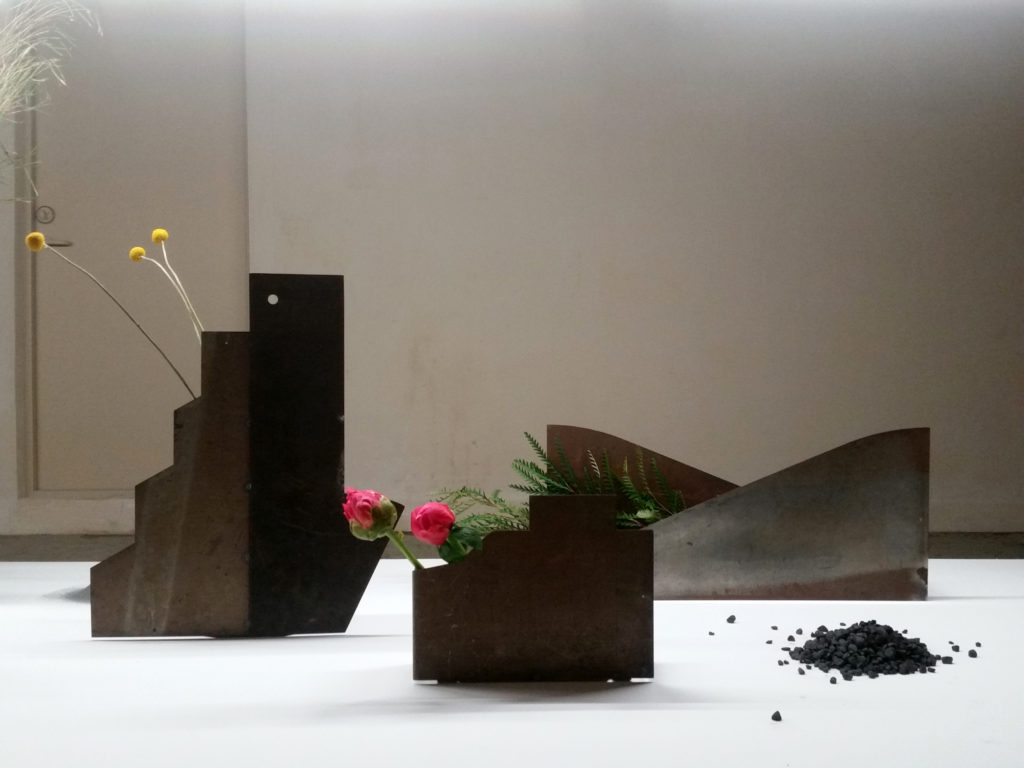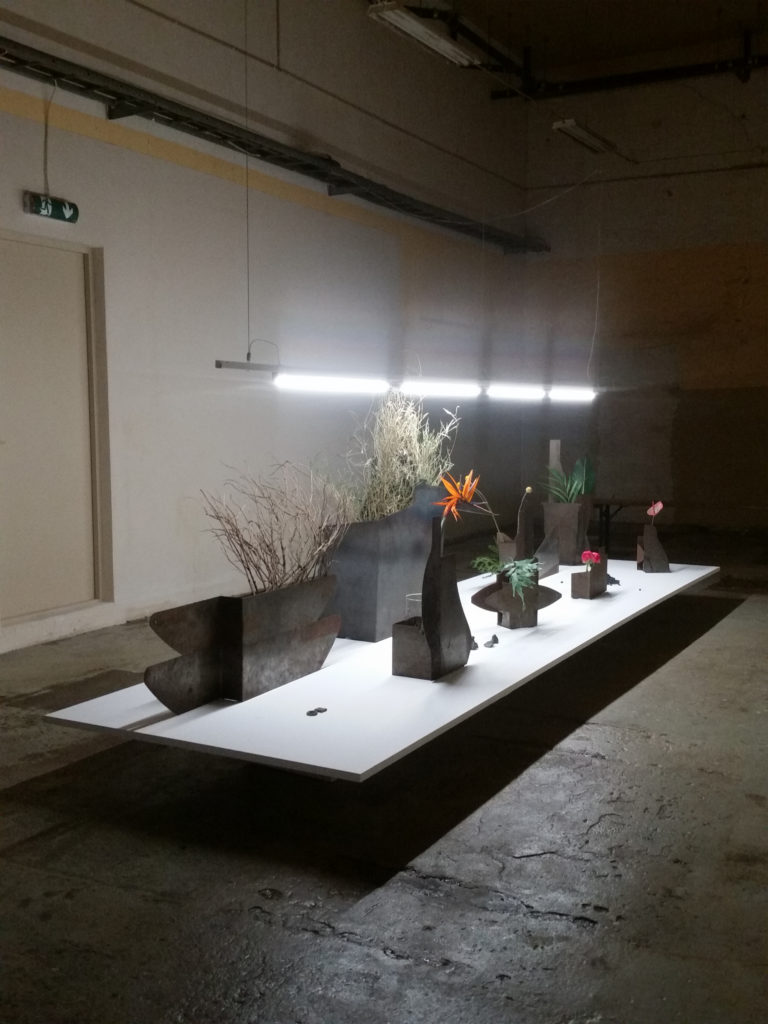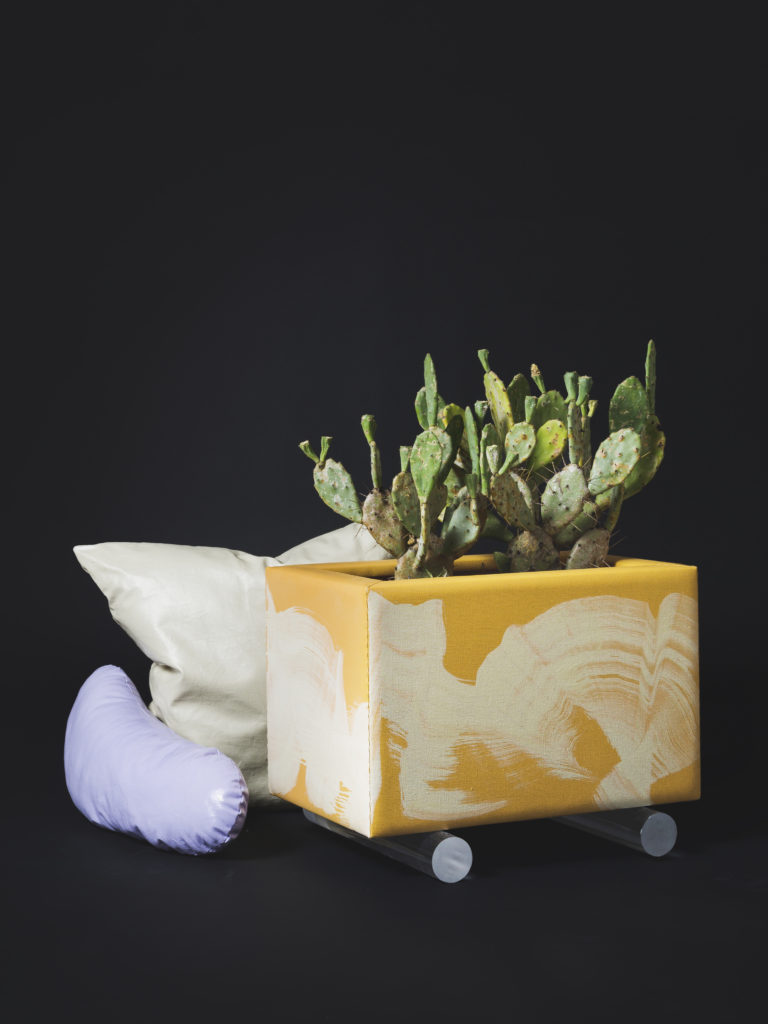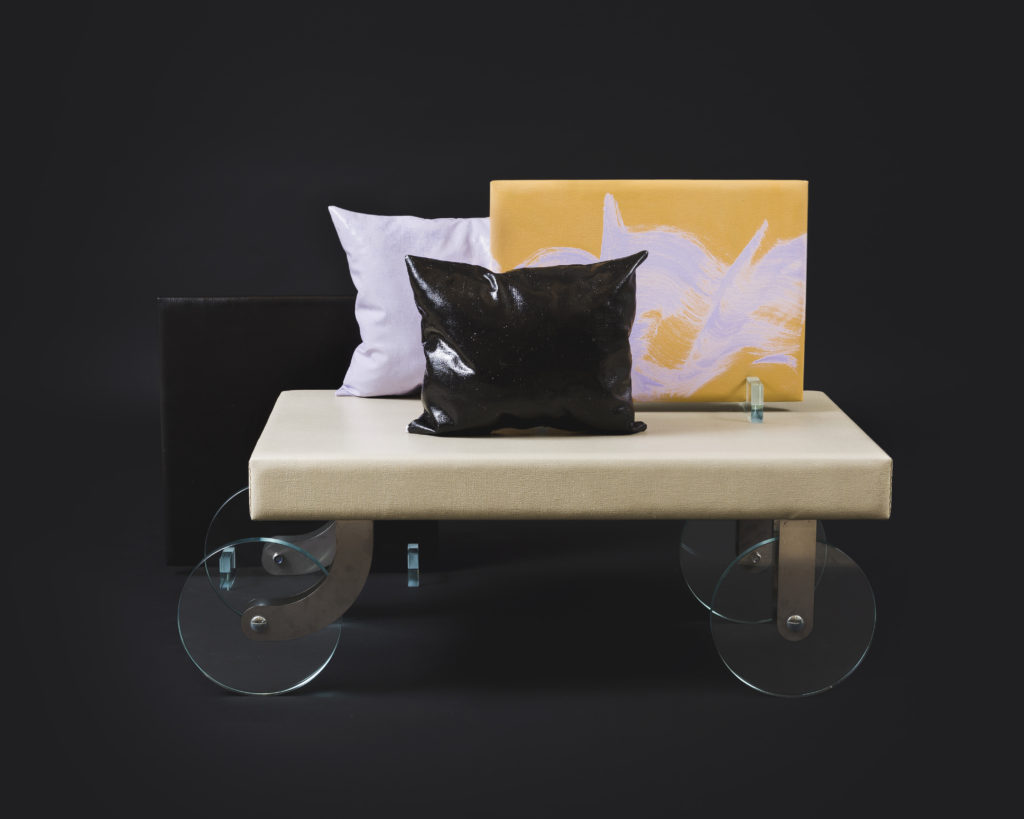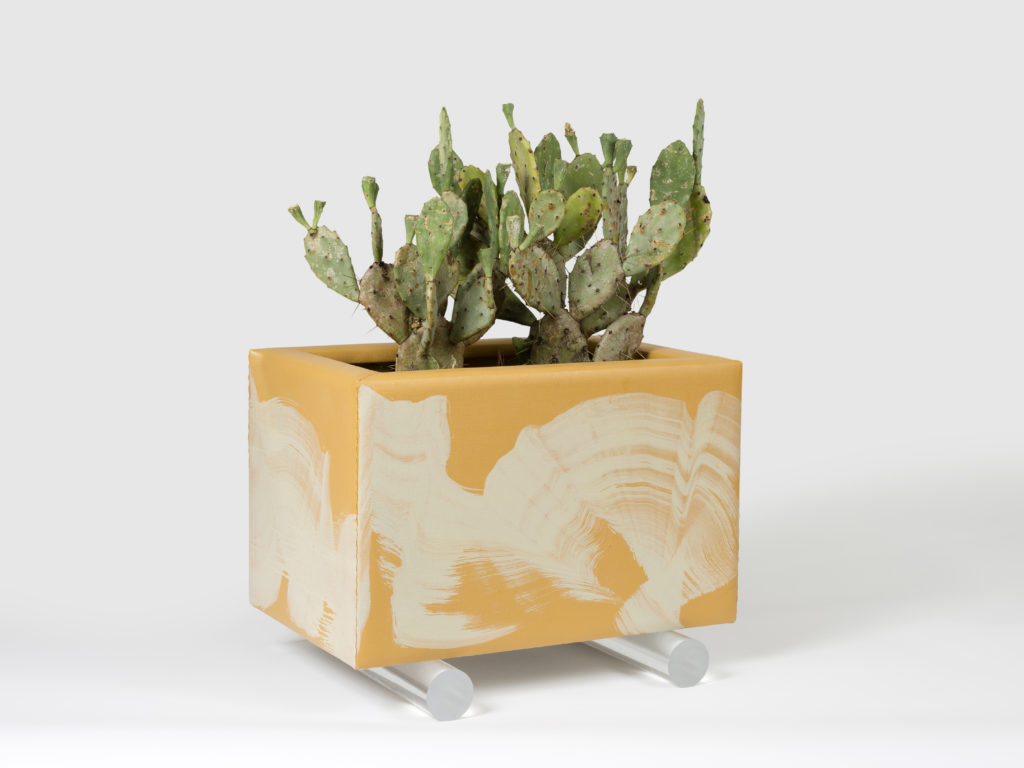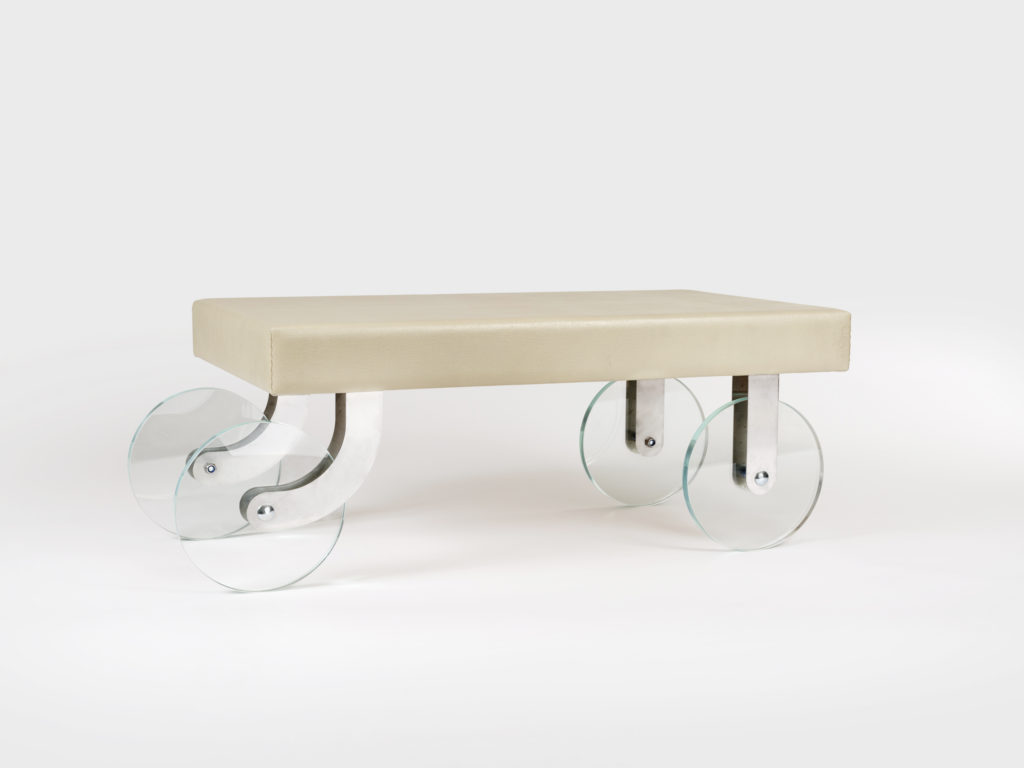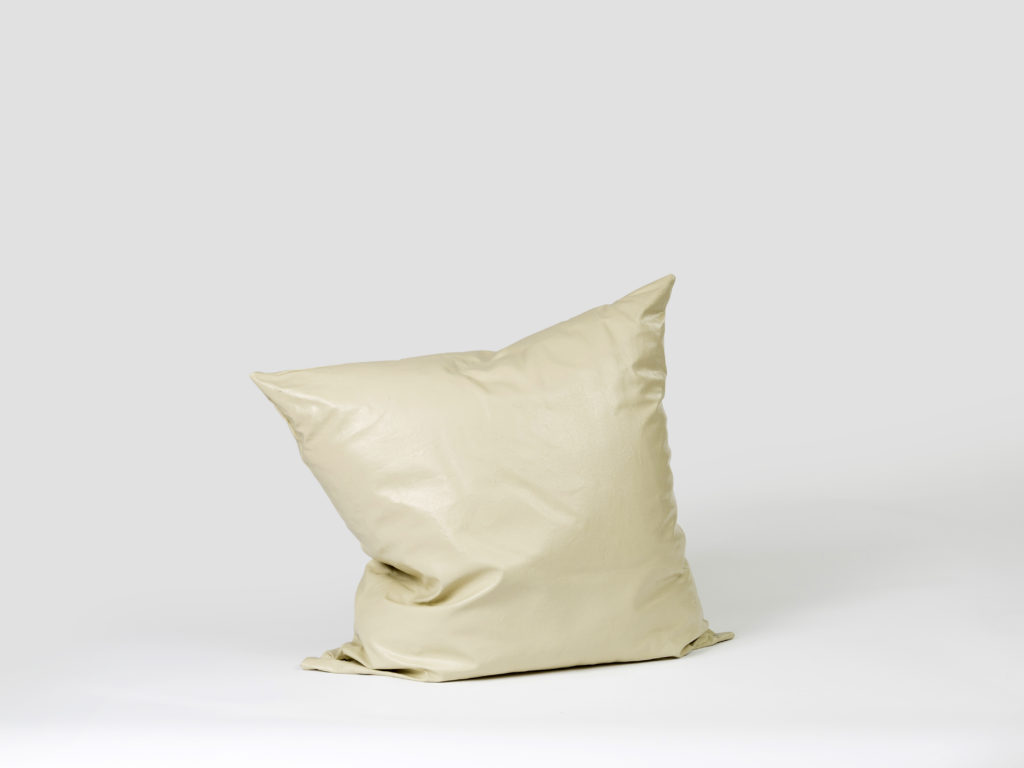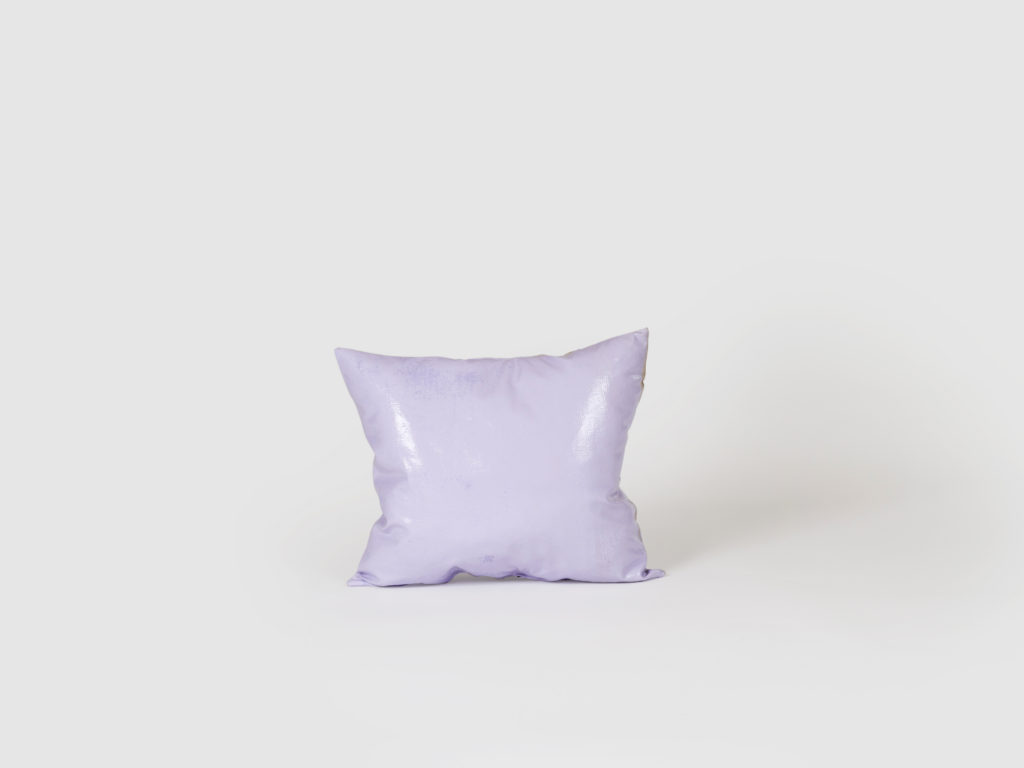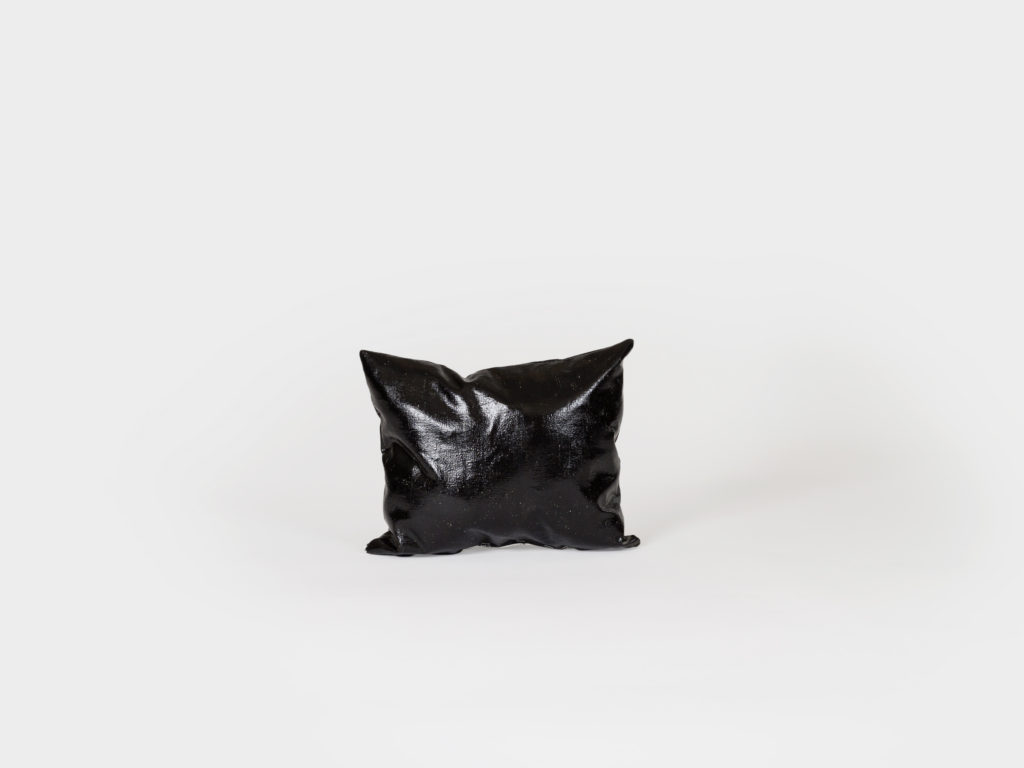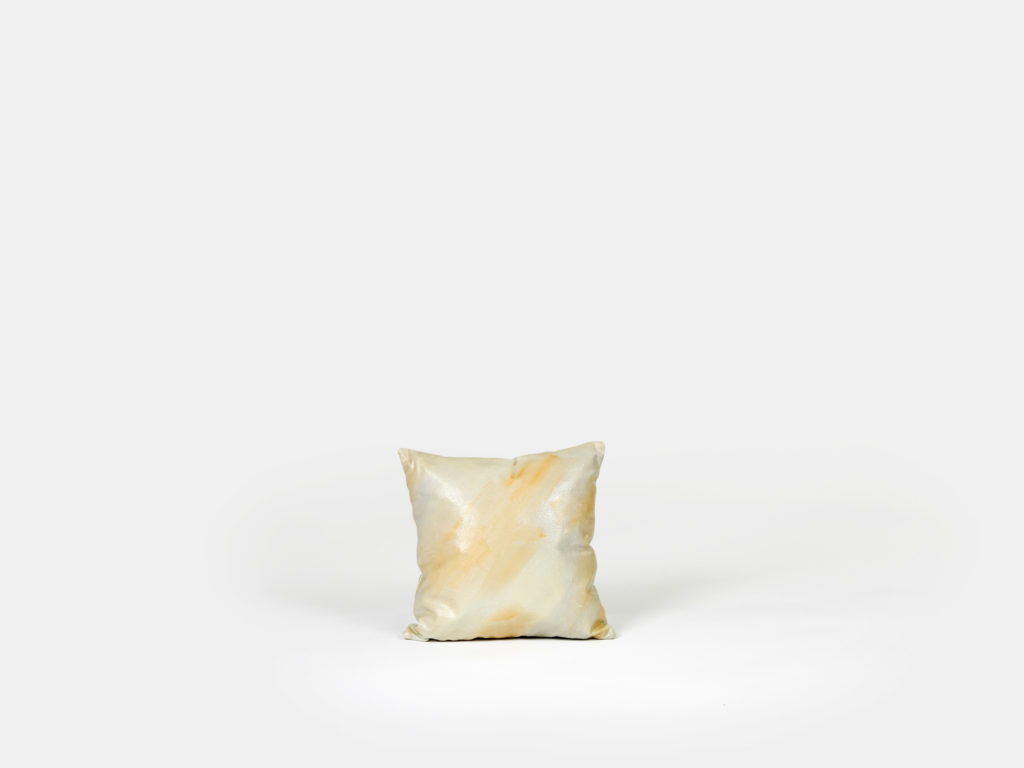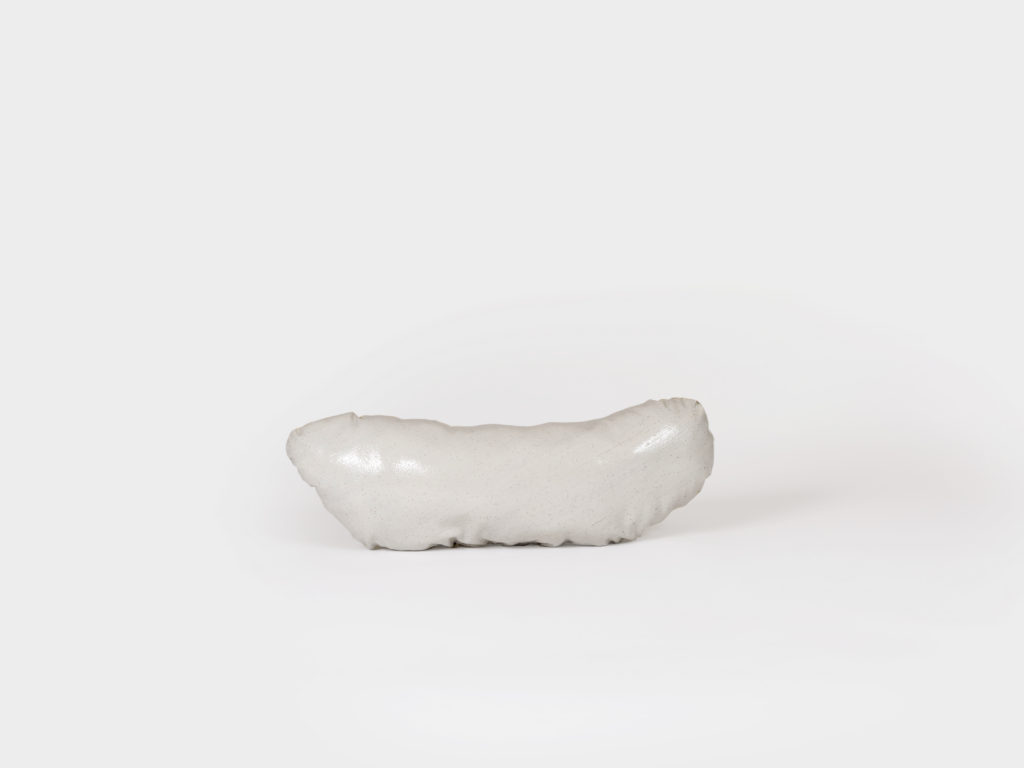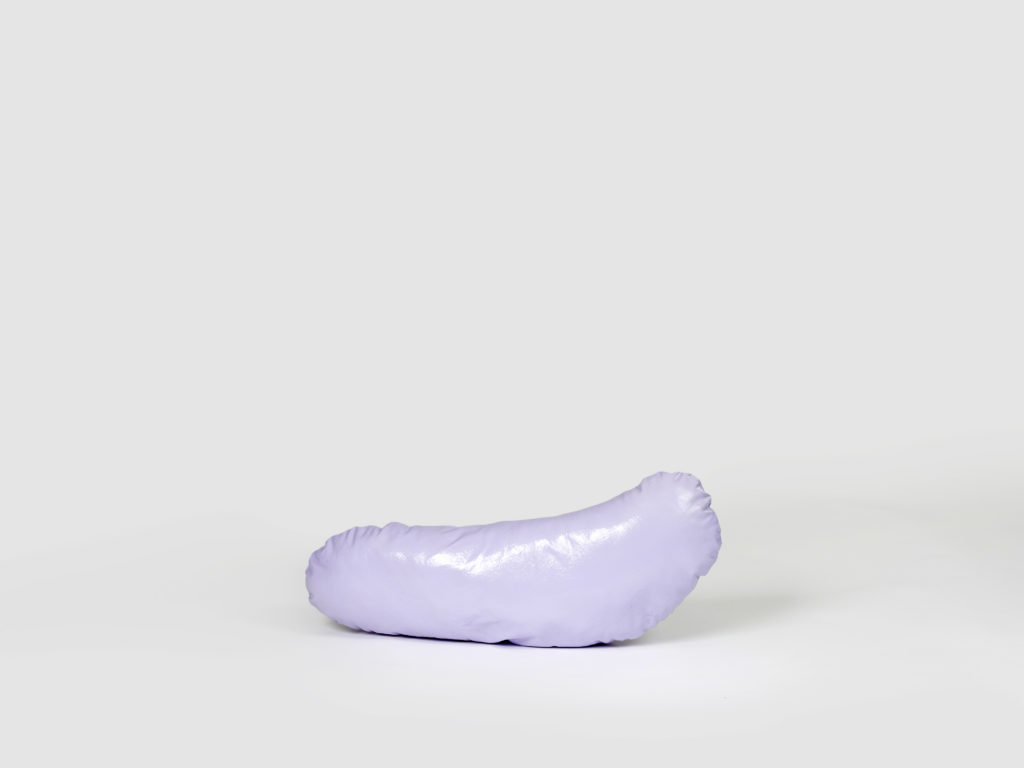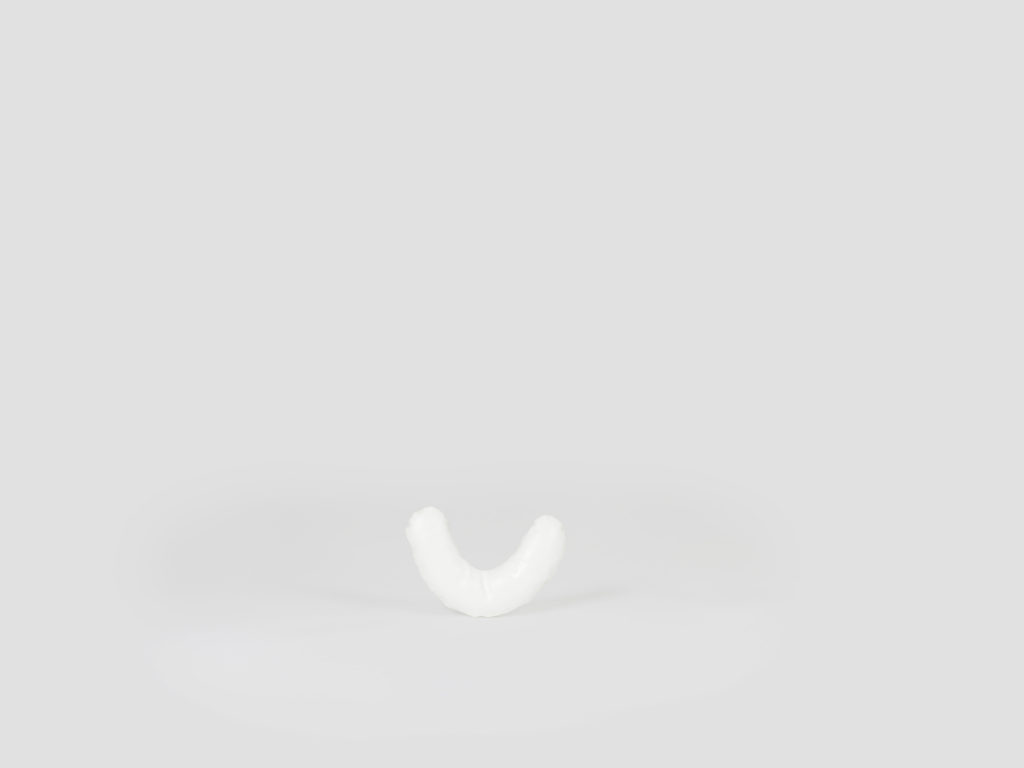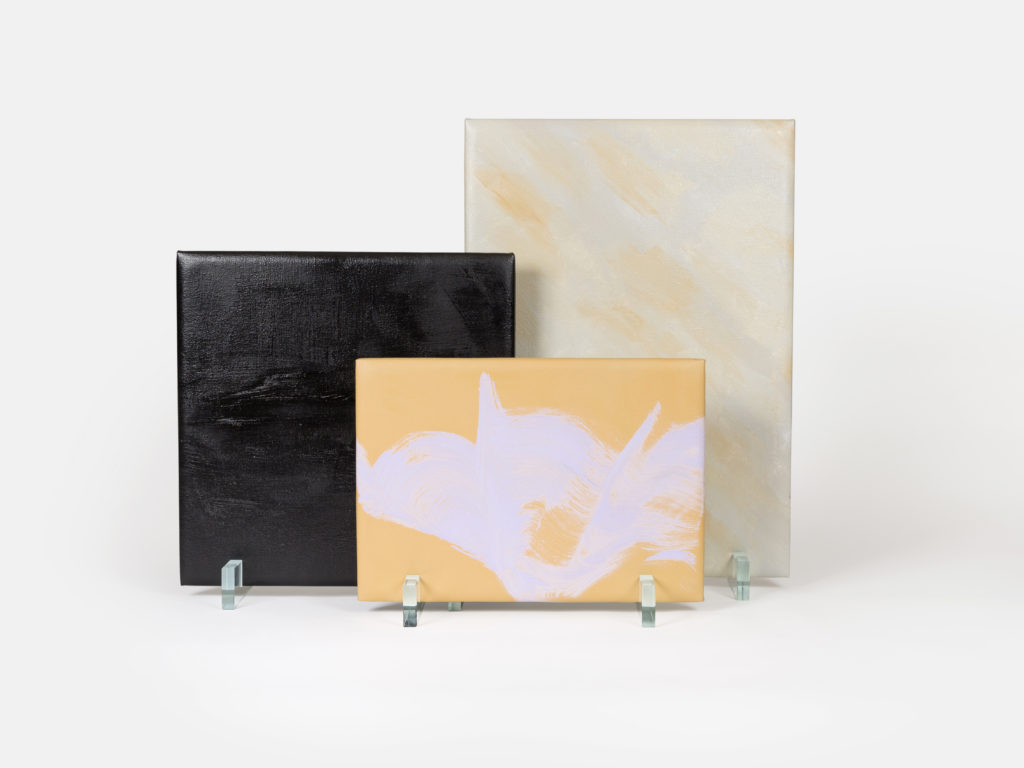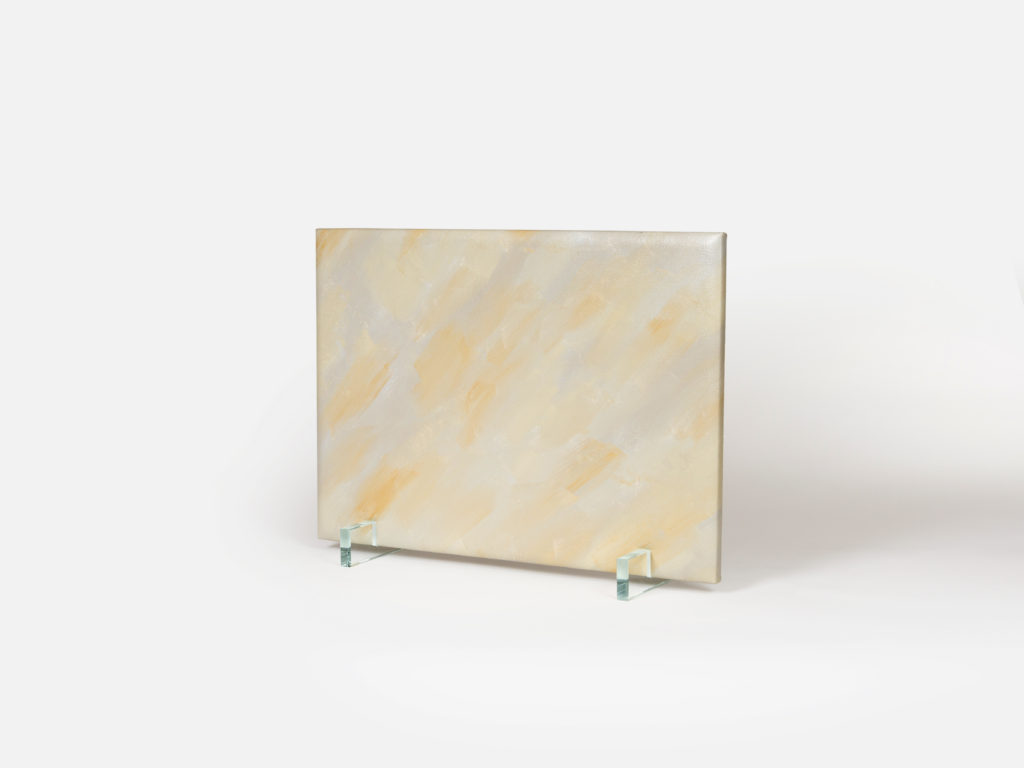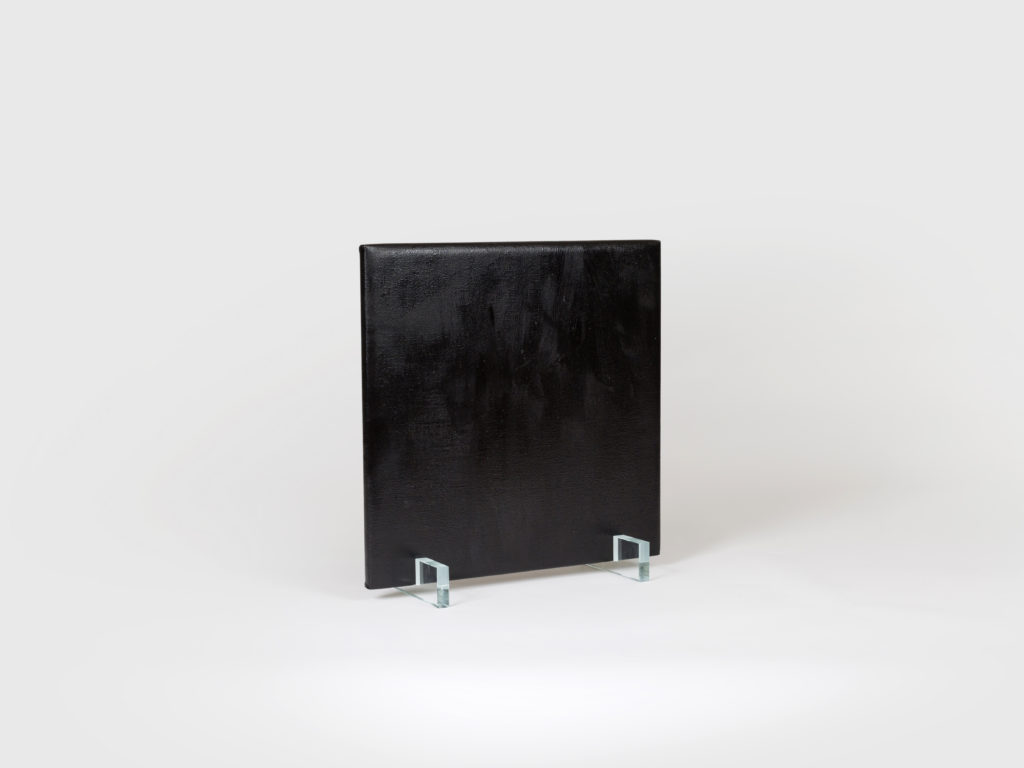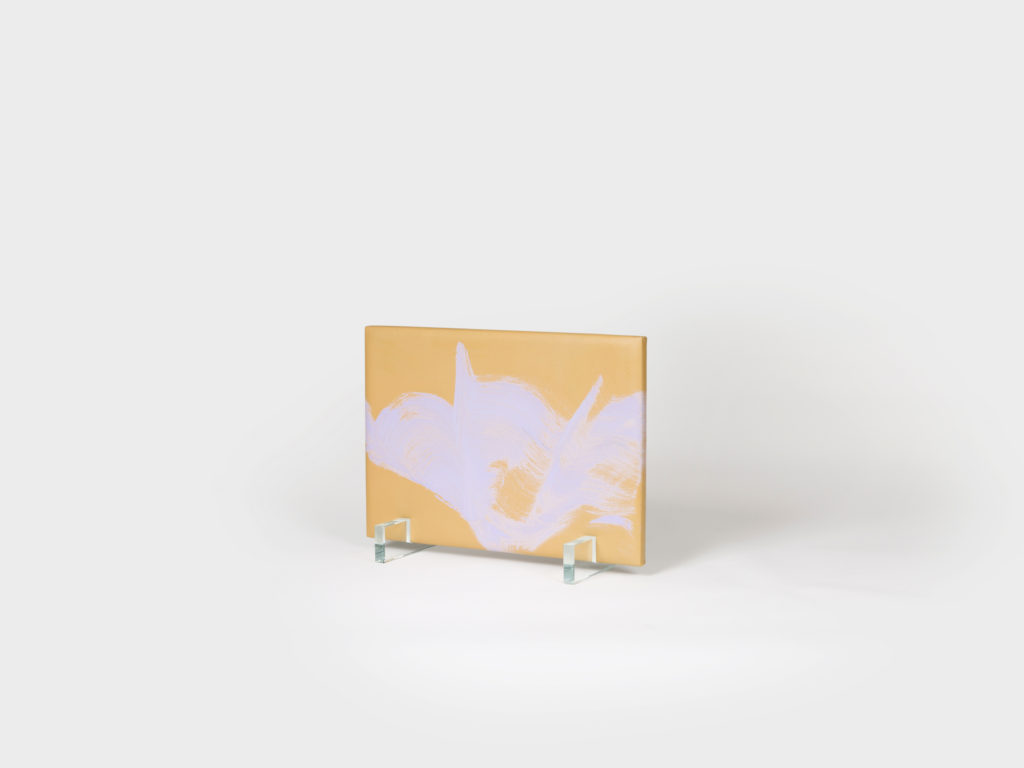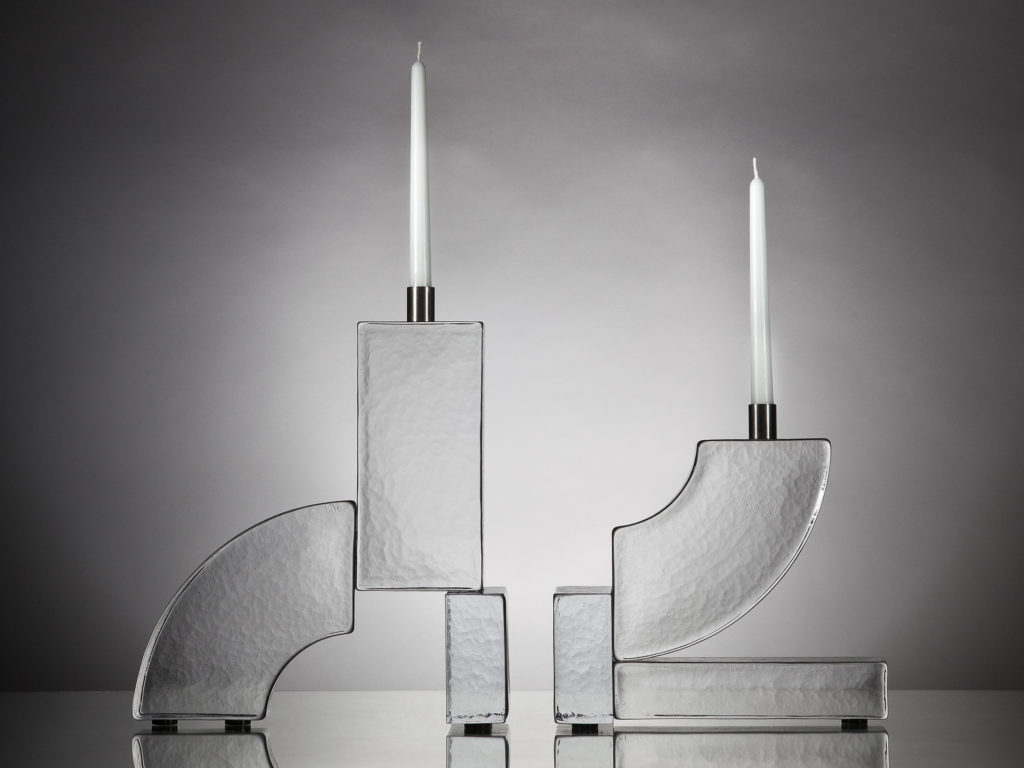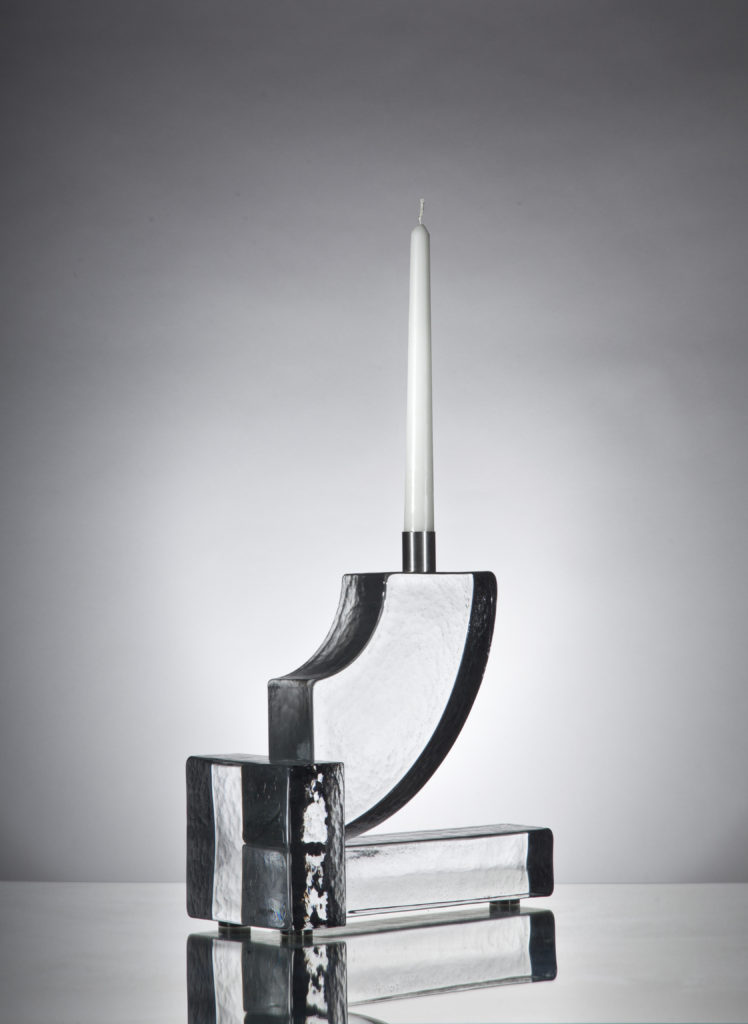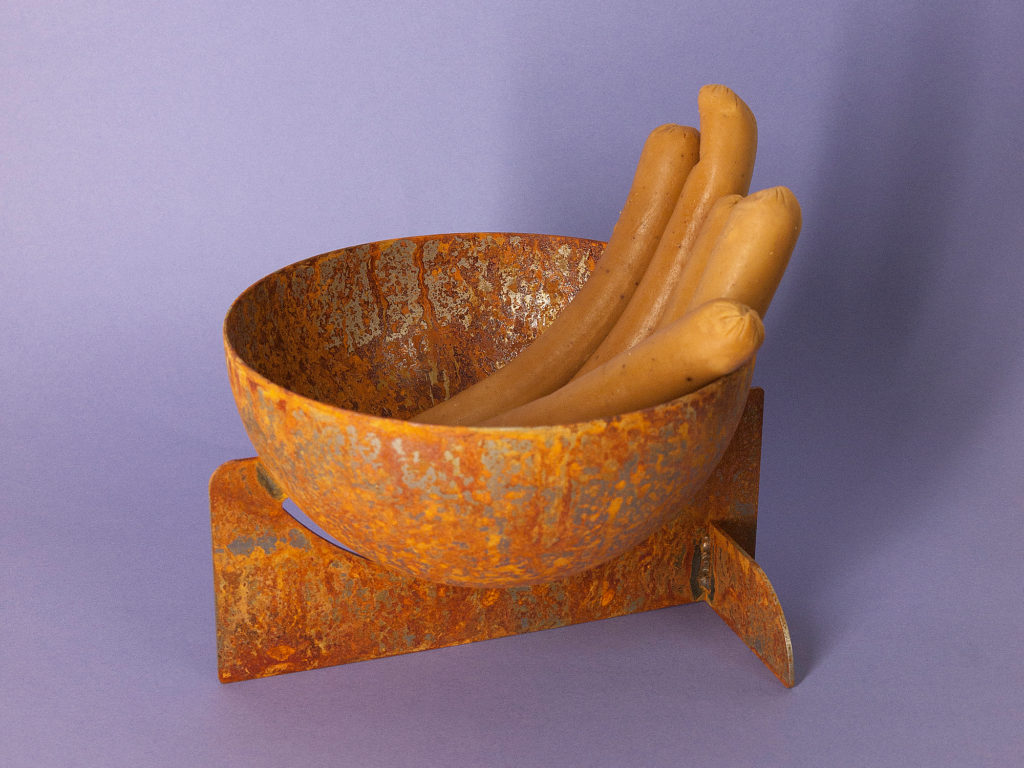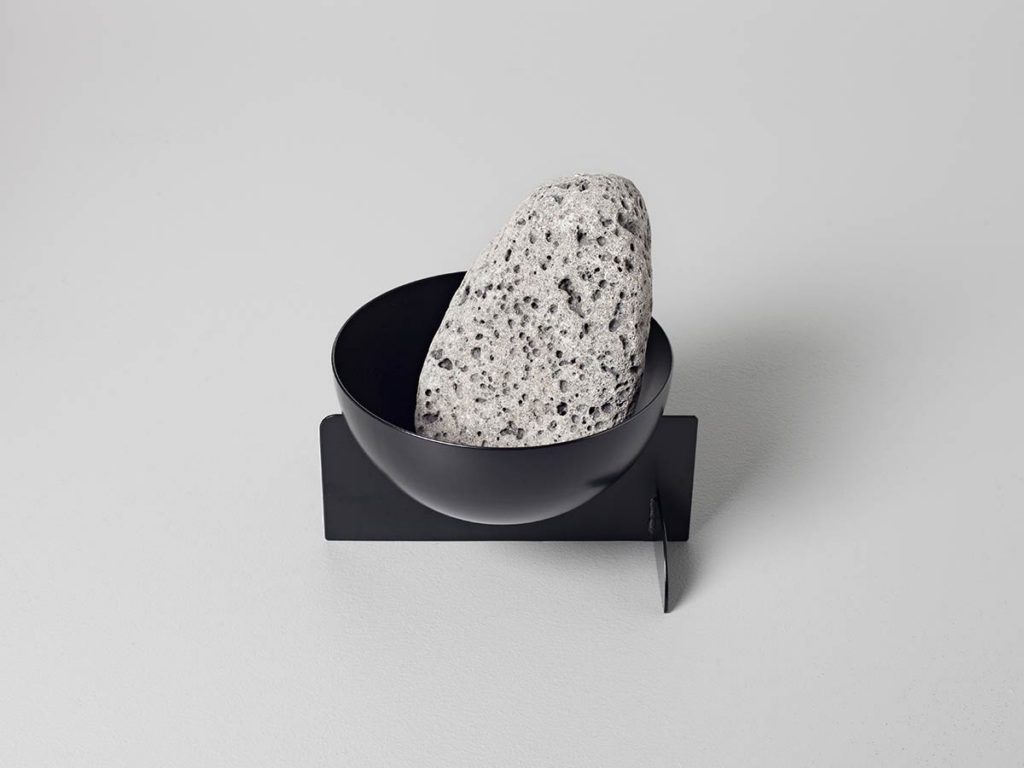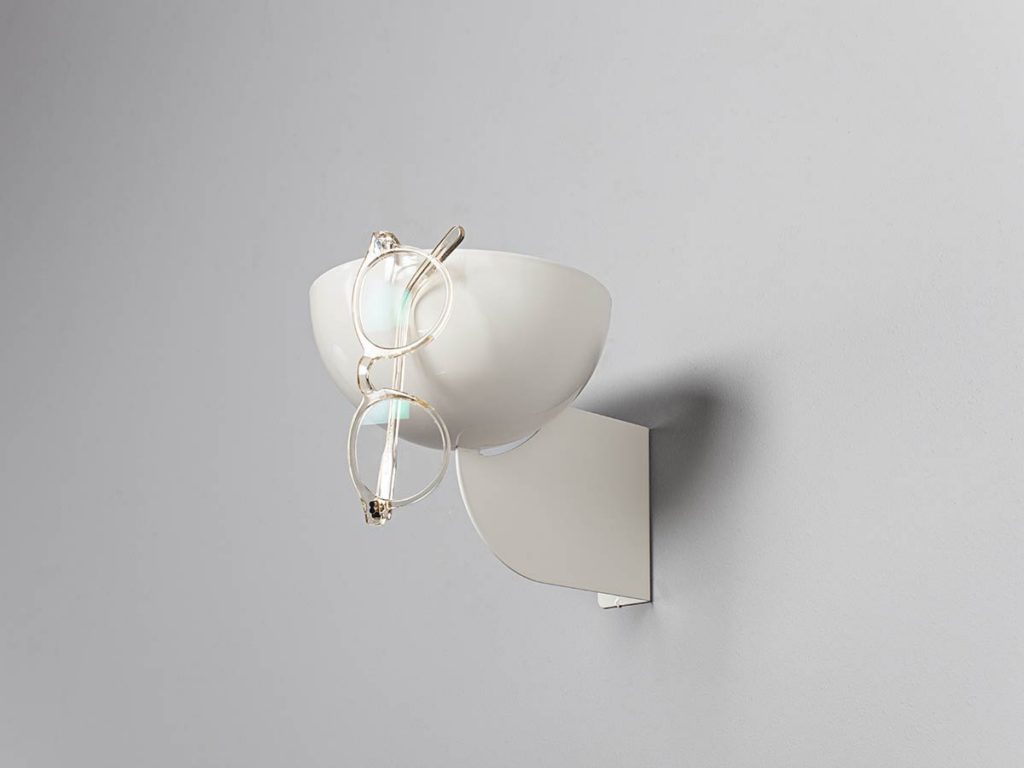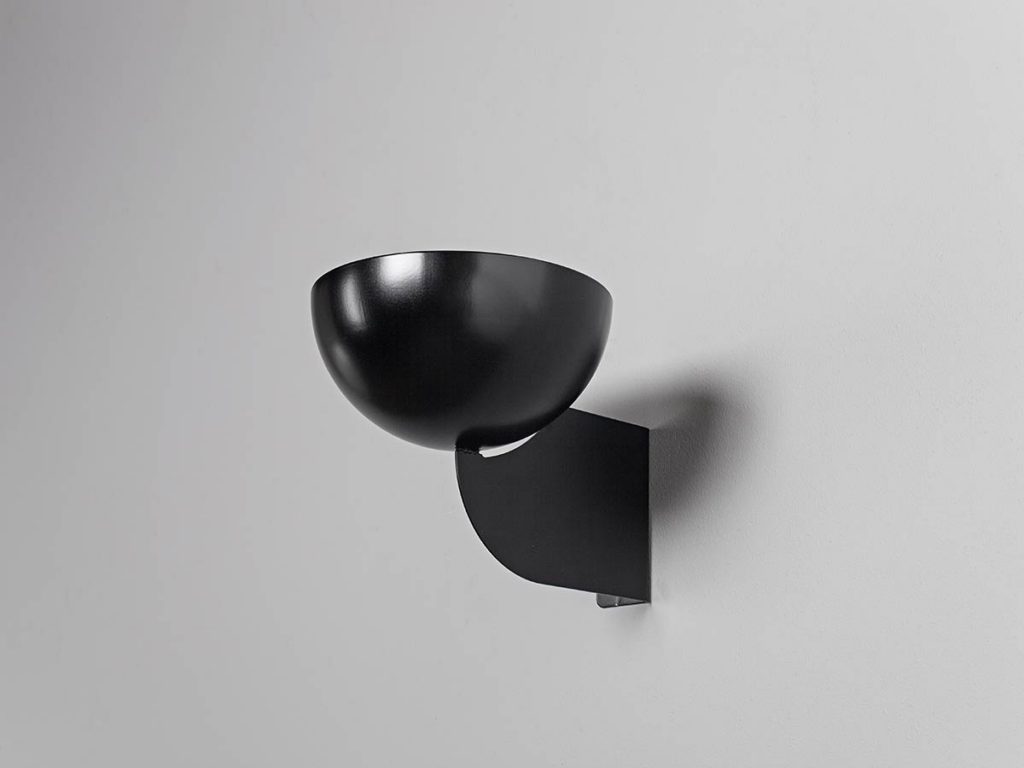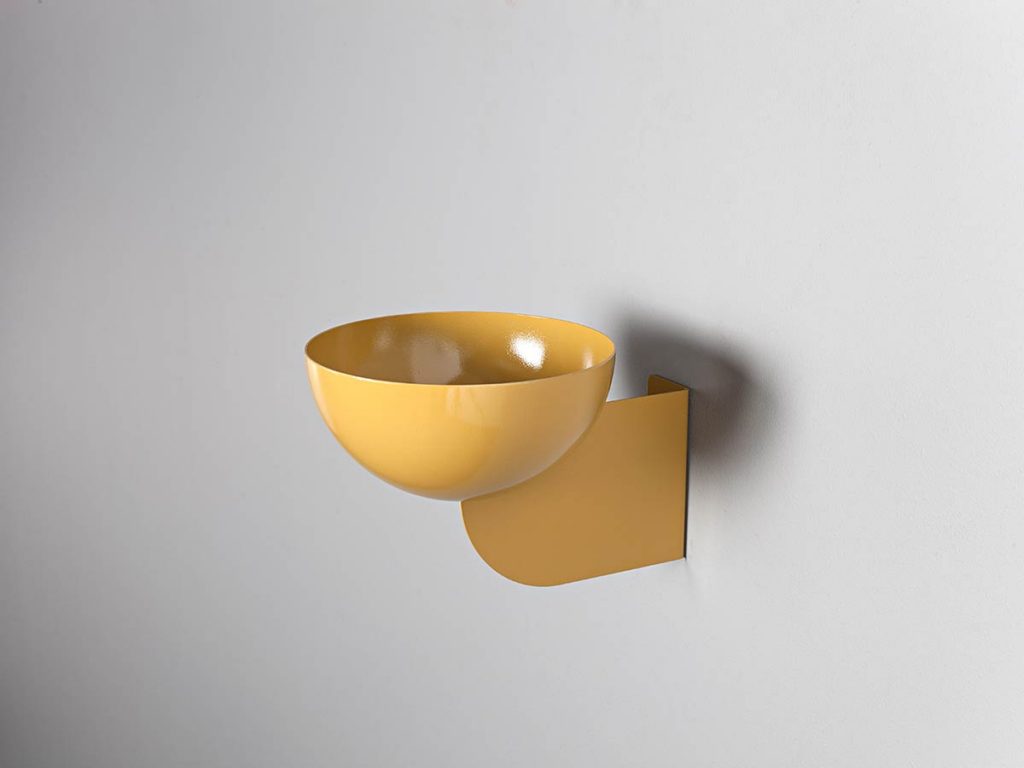-
INGER
INGER – Optical Illusions
Homage to Inger EkdahlInger Ekdahl (1922-2014) was an artist and Swedish pioneer in spontaneous painting during the middle of the 20th century. In many of her later paintings and sculptures she worked with optical illusions and prismatic effects. Ekdahl often worked from home and used, among other things, a vacuum cleaner as an aid in the production of her works. Inger Ekdahl has become more known for a larger audience and placed in an international context after her death.
There is a clear relationship between Jenny Nordberg and Inger Ekdahl’s work including methods that are both strict and controlled parallel with random elements and effects. The collection “INGER – Optical Illusions” consists of two objects that both generate rainbow phenomenons. One solar powered and the other one electrically powered. In the same way that Ekdahl worked in a home environment, Nordberg has developed a kind of home-adapted production line for the final surface treatment of the rainbow makers. The process is relatively controlled but also has some indeterminate elements.
“INGER – Optical Illusions” are designed during 2018 on behalf of Ystad Art Museum.
Photos by Korta Ben.
-
Category Archives: Projects and Collaborations
-
In Vitro Printer
This 3D-printer is influenced by the bone healing process that takes place within the body (in vivo). The In Vitro Printer however, runs outside the body – in vitro. Layer by layer, altering different materials, the printer bilds a bone like structure. And just as with bone healing the printer uses no electric power nor computer control. The human body is the machine.
The In Vitro Printer is a 3D-printer influenced by the bone healing process that takes place within the body (in vivo). The In Vitro Printer however, runs outside the body – in vitro. Layer by layer, altering different materials, the printer builds a bone like structure. And just as with bone healing the printer uses no electric power nor computer control. One could even argue that the printer doesn’t exists since it only runs when the predominant part, the human body, is present. The human body is the machine. The printer is programmed by physical matrixes in resemblance to how cells are programmed to organise bone healing. There are also an arrangement with scaffolds to make the process easier, comparable to assisted bone healing that bridges large fractures with small calcium scaffolds.
Real bones are made of collagen and calcium in microscopical thin layers. When a bone is injured the bone healing process within the body starts immediately. The formation of bone demands an in vivo (within the body) environment and it’s a process that seems almost magical as the bone heals automatically. The bone “wants” to heal. However, when a massive bone defect occurs the bone needs help to heal. Professor Magnus Tägil is a specialist and researcher within bone healing at the Department of Orthopaedics at Lund University. The origin of this project is the conversations held with him.
The material printed in the In Vitro Printer is a vegan version of collagen, calcium and other substances closely linked to bone. The aim is not to print bone though, but to be influenced by (or embody) the “bone-making-process” and then move freely around this topic. The outcome of the In Vitro Printer is both rough and erratic, the human presence is inevitable.
Exhibited during Dutch Design Week 2018 with the support of Konstnärsnämnden.
-
-
Nationalmuseum Mirror Installation
The National Museum in Stockholm opened again at the 12th of October 2018 after being closed for over five years due to a major renovation and restoration. Jenny Nordberg was invited to make a permanent mirror installation for the café and restaurant. The room where the mirror piece is placed used to be a portrait hall and a mirror itself could be seen as a temporary portrait. The mirror technique used originates from the 19th century. A painting in the museum collection, Portrait of a Young Lady as Flora painted by Louise Vigée-Lebrun was made during the same period. The few female painters who worked during that time were almost exclusively assigned to paint portraits, which was lower in rank. The white background color in the mirror is the same as in Floras dress.
The traditional mirroring process from the 19th century where a silver surface is developed on glass is rarely used today because of high cost and technical difficulty. Nordberg has been developing this technique and chosen to eliminate all the unnecessary moments as well as the requirement for perfection to achieve a more multi-dimensional mirror effect in an indeterminable form. The glass comes from one of two flat glass factories that remain in Sweden, both located in Malmö.
The technology was originally used for the first time in the 3 to 5 seconds – Rapid Handmade Production project. This projects is like many other of Jenny Nordberg’s projects part of a larger and ongoing work about how we produce and consume today, how we’ve done historically and how we could do it in the future. In the project 3 to 5 Seconds she examines how different properties from the handmade and mass produced can be combined. 3 to 5 seconds is about bringing together contradictions and hard to achieve qualities. The project combines the uniqueness of the handmade and the speed of the mass produced. Is it possible to make one of a kind handmade items really fast?
-
-
Assemblage
Assemblage was originally designed for the restaurant at Nordic Light Hotel in Stockholm that went through a major restoration in 2017/2018 lead by Marcus Bergström. The concept of assemblage were materialised in this lamp as groceries and objects found in the kitchen were stacked in different three-dimensional collages. Butter together with a bowl, a plate and a rubber ring for preservation became the final composition. The re-chargeable LED lamp is made of recycled aluminum, glass and rubber and produced by Ateljé Lyktan.
-
-
Most Common Element
The project/exhibition Most Common Element took place at Obra, a post artist-run, post-alternative research oriented art gallery located in Malmö, Sweden, between March 23 and April 21, 2018.
Jenny Nordberg (Halmstad, 1978) is an industrial designer with an exploratory practice currently concerned with the recovery of processes and material. Her design projects develop through conversation and research in and outside her Studio. Questions about time, role play, efficiency, hierarchy and progress are recurrent in her practice. While the finished and functional aspects of design remain central, her conceptual concerns take a profoundly serious importance yet are addressed in a playful manner. In her methodical performative activity a quasi-mystical persona conveys not only the mechanical aspects of production but the alchemical elements of material transformation.
For her exhibition at OBRA, Jenny has undertaken the exploration of a technique (welding) and a material (iron) that played an important influence in the history of the area where the exhibition will take place. Iron –the most common element on earth by mass– was a central metal in the modern shipbuilding industry and played a central role in the socio-economical landscape of the city of Malmö where the hosting gallery was recently established.
Additional to the opening date, Jenny will be welding on-site and producing unforeseen objects that will gradually depart the working table to be displayed at the back room of the gallery along the exhibition period.
Tomás Feener, Obra
For inquiries, please contact Obra, www.obra.se.
-
-
Painting Leather
Painting Leather is a research based project with its origin in the 18th century fake leather practice often to be found in antique furniture from this decade.
Going fake is often a shortcut or a detour to achieve something seemingly unobtainable. The fake leather material produced three hundred years ago was made to avoid the high cost of animal leather. This approach could also be applied on today’s leather industry, but from a different perspective. The valuable shortcut made by skipping the animal is in the center of this project. Apart from the benefits of being fake the Painting Leather material also evokes another shift of value. The way the material is obtained is very similar to how a traditional oil painting is prepared, handled and made. The fake leather is never a painting though, even if it comes across as one in several stages of development, and could for a conservative eye be seen as seriously devalued when cut a into parts and used as a material.
The objects within the Painting Leather project have been designed in conversation with the work of 1700s and 1800s oil painters Sophie Adelsparre, Ulrica Fredrica Pasch, Maria Röhl and Amalia Lindegren. The objects are: The Screen, The Container, The Glass Roof, The Padding, The Wall Padding, The Non Smiles and The One Smile.
-
-
BRICK
Nordberg’s fascination for the ultra-standardised is materialised in the BRICK series. Casted glass bricks with the exact measurements of old traditional bricks are composed into sculptural candle holders.
Besides the traditional dimensions of the bricks nothing else is standard – the BRICK series is hand casted in a small Italian glass foundry and patiently assembled in Sweden.The Bricks series is designed for Swedish Ninja.
-
-
OPEN
The Open series for Minus Tio consists of three sculptural objects for storage.
When developing the Open series designer Jenny Nordberg looked for manufacturers who where willing to work with preexisting tools instead of making new ones for these particular objects. This approach was a deliberate strategy to contribute to a more open-source-like mindset within manufacturing where tools usually are locked to one client only. Working with preexisting tools also means that external and predetermined factors become part of the design process and final expression, something Nordberg appreciates.
Open comes in four different colours — ocher yellow, matte black, oyster white and rust. Buy here.
-
-
Things my daughter said…
Things my daughter said about objects, interiors, ornament and crime
I was asked by Jr-Work-Shop to do something related to kids. Not having ever worked with, by or for children I asked my daughter for some advice, she then became my muse. Her thoughts about furniture, objects and interiors are both grand and unrestricted. The ideas she has are also constantly changing, often inconsistent and based on seemingly random impulses. This project has been guided by our conversations. It is a tribute to the creative and un-ruined mind of this young person. The objects created are not necessarily children’s furniture but furniture from a child’s mental world.
During this project me and my daughter have had several talks about objects, design and interiors. After a while she directed our discussions into also including ornament and crime. Below is a transcription of one of her expositions:
What should furniture be and look like?
“It should be square, like dark blue and pink stripes, and in the middle there will be a green heart for all three, because we are three. Well yes, it’s for all three: daddy, you and me. Triangular, so there’s only places for us – that’s good, no? And then you can fix it into a four-table. Then the chair… pink and white. And on it there will be umm… a green, I mean a blue glitter… purple glitter… like heart. It will also be a little fluffy, with a pillow on it.
And a strange chair which is high – right up to the table – plus it could be a little higher, so that daddy, you, then it will look like, how will it look again? I mean the table which is triangular. What does triangles look like? Oh yes, like that… Then daddy will sit there and I will sit there… or you can sit where you want.
It, that is for all three. Then probably daddy’s… yours must hold the wight of your bum. Mm, so you can borrow one of mine. And mummy, your stool can be green with black glitter on it that sparkles, that it is made of wood. And me and mummy will paint it. I will have a chair. Umm… white, white and purple, with a purple heart that sparkles green.”Listen to the monoluge here: https://vimeo.com/202720833
Other comments of importance
About the glitter ornaments she put on every door handle and knob in our apartment:
“Look how nice it is! Before, not so nice, boring. Now, beautiful!”About the drawing of her hand she gave me:
“It’s made from my hand. You can have my hand.“About the drawing on a post-it note she put on the freezer about interior related crimes:
“You’re not allowed to play ball in here.“Represented at Jr-Work-Shop during Stockholm Design Week 2017:
Stools in two different heights
Metallic coated steel and uncoated aluminumA transformable table for three or four
Metallic coated steelMy daughters hands
Painted MDFA prohibition sign
Painted MDFGlitter
Plant based plastic -

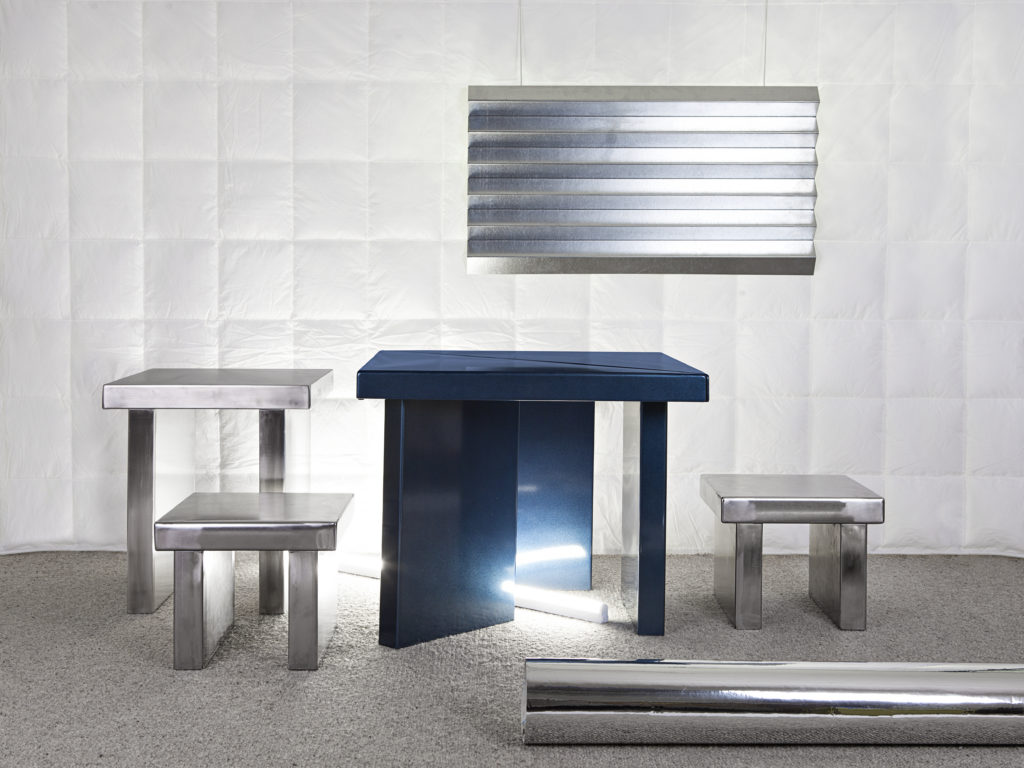
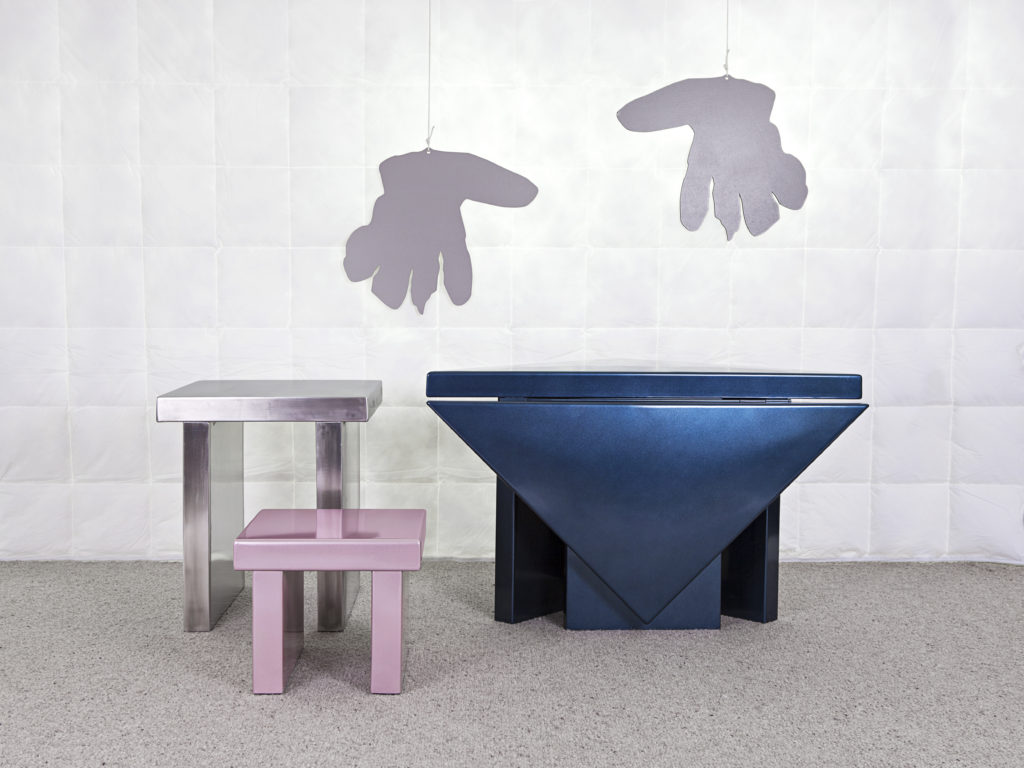
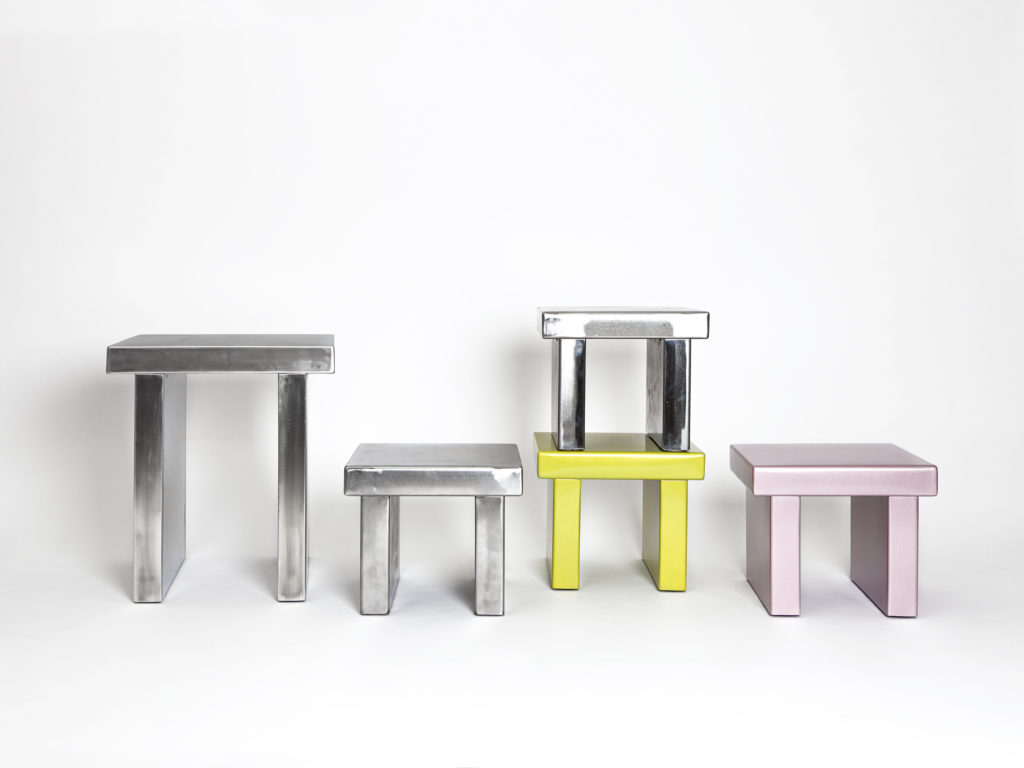
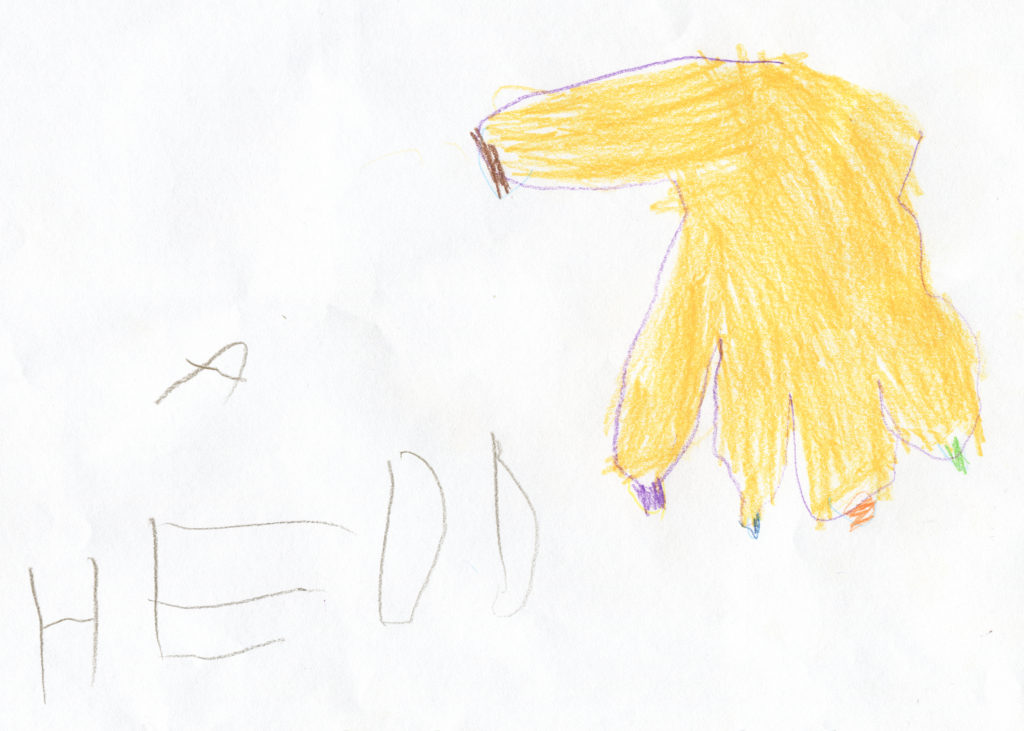 “It’s made from my hand. You can have my hand.“
“It’s made from my hand. You can have my hand.“ "You are not allowed to play ball in here"
"You are not allowed to play ball in here"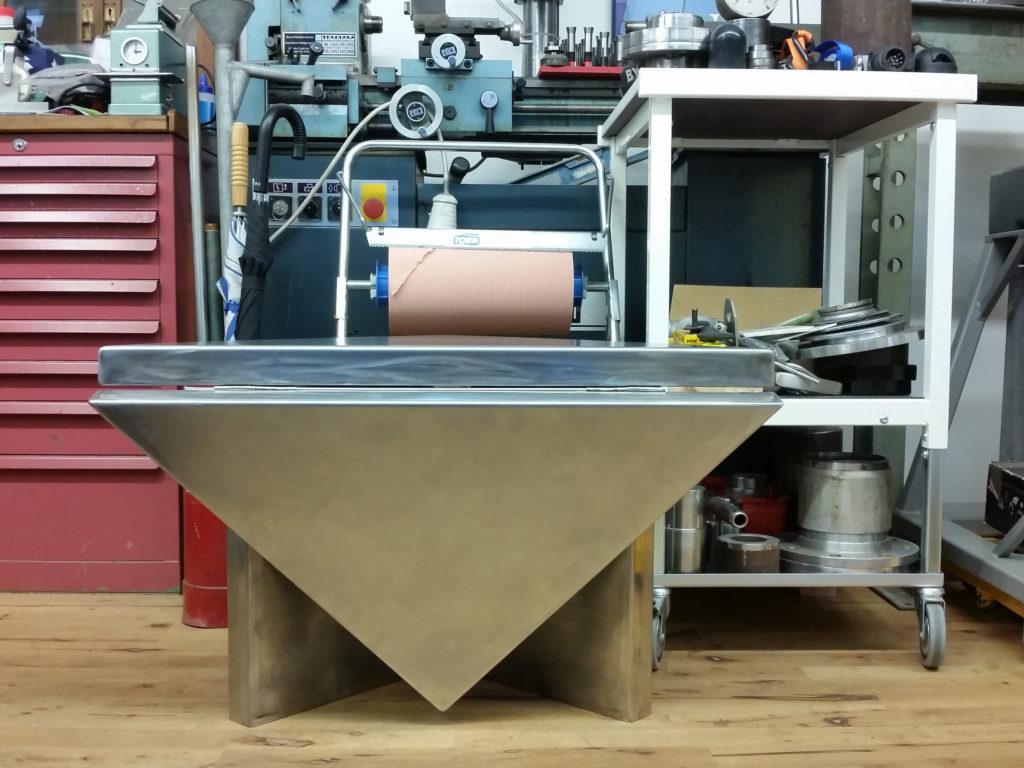
-
Brus
For KÄLLEMO
Jenny Nordberg received Form Award’s “Newcomer of the Year” for this project during Stockholm Furniture Fair 2017.
“Jenny Nordberg is one of Swedish craft’s foremost talents and thus anything but a newcomer. With the project Brus for Källemo, she has taken her artistic credo into a new industrial context. Brus is a beautiful contradiction, an object that is both unique and mass-produced.”Brus (noise) is a project where Jenny Nordberg has brought uniqueness into an industrial context. By deliberately disturbing the casting process an irregular surface is reached where no result is the same.
Nordberg seeks and explores new ways of relating to production. During one of her practical experiments in the studio, she discovered a way to obtain a strongly articulated surface of casted metal. A test with clay moulds resulted in this surface when water from the clay rose up through the metal. This method with wet molds were then transferred to the foundry which then has further developed the method into a new way of casting.
Brus follows the projects 3 to 5 Seconds and 3 to 5 Minutes where Jenny Nordberg brought characteristics of industrial mass production into a craft context. Now she examines a reversed perspective — it is possible to obtain unique items as a result of industrial production, an attribute which is often connected with the craft?
Brus är ett projekt där Jenny Nordberg har arbetat med att föra in unicitet i en industriell kontext. Genom att medvetet störa gjutprocessen har en oregelbunden yta uppnåtts där inget resultat är det andra likt.
Nordberg söker och utforskar nya sätt att förhålla sig till produktion. Under ett av sina praktiska experiment i studion upptäckte hon ett sätt att få fram en kraftigt artikulerad yta hos gjuten metall. Ett test med lerformar gav denna yta när vattnet från leran steg upp genom metallen. Metoden att använda sig av blöta gjutformar överfördes sedan till gjuteriet som sedan har vidareutvecklat ett nytt sätt att gjuta.
Brus tar vid efter projekten 3 to 5 Seconds och 3 to 5 Minutes där Jenny Nordberg jobbat med att lyfta in egenskaper från industriell massproduktion i en hantverkskontext. Nu undersöker hon ett omvänt perspektiv — går det att få fram unika objekt som resultat av industriell produktion, något som ofta kopplas ihop med hantverk?
-

 Colour palette from Källemo workshop floor.
Colour palette from Källemo workshop floor.


